CLICK ON THE MAIN PHOTO ABOVE TO VIEW CAPTIONS IN GALLERY FORMAT
Image 1: Amazingly, it’s already a year since Cumbriafoodie and I did a 24-hour Italy trip together, to enjoy the delights of two of the best restaurants in Italy -
Image 2: Chef Quique was just 17 when he started working at this local family restaurant, El Poblet, back in 1989. Although he was young, his cutting-edge ideas in reinventing traditional cuisine slowly gained attention across the town - and even spread to the top chefs in the country. As a result of this success, he took over the restaurant in 1999.
Image 3: Gaining his first Michelin star in 2003, followed by a second in 2007, Chef Quique decided to change the restaurant’s name to his own in 2009. He was awarded the highly-prized third star in 2013, and in recent years has appeared in the World's 50 Best list. As the restaurant evolves its menu regularly, he decided to open a restaurant (El Poblet in Valencia) where diners can enjoy the popular dishes that are no longer on the menu here.
Image 4: It was a gorgeous day, so the manager suggested that we relax and enjoy the "1st Act - Snacks" in one of these outdoor booths.
Image 5: Soon after we had settled, the first item arrived, Sangria of vine peach. A nice start - fruity, and refreshing - though it would perhaps have been even better at about half the size since after a few bites, it felt like eating berry jam.
Image 6: This was followed by a Light beignet of codfish served on a wooden tray. Crispy on the outside, with a runny warm cod cream inside, it was absolutely delicious!
Image 7: Chef Quique’s creative origins lie in the reinvention of traditional Spanish food - and this was a great example. Called Rice a banda "socarrat", it was his version of socarrat, the layer of toasted rice at the bottom of the pan from paella. A round toasted rice cracker created the taste and texture of socarrat, and the dish was even served in a small paella pan. Great imagination!
Image 8: The little snacks continued coming. Corals - tiny shrimps on colourful rice crackers.
Image 9: Now a truly unique-looking dish, called Carbon of "pericana". Traditionally, pericana is a blend of olive oil, garlic, paprika, dried cod - perfect for dipping toast. Well, Chef Quique’s version certainly had lots of flavours just like the traditional dish, but instead of toast, they presented charcoal! Except, we had a surprise in store....
Image 10: ...Not charcoal at all, but a mixture of dry meringue and squid ink, exactly mimicking the look of charcoal. Cool!
Image 11: This Ravioli of edamame was a small pocket of spicy tomato soup with edamame bean. A real burst of freshness in my mouth - sensational!
Image 12: And, to finish the 1st Act, a taste of a local plant - pickled Raïm del pastor and Cordifolia.
Image 13: This Mojito ice was served as we were led into the dining room. Elegant-looking, for sure, but – as the ‘drink’ was actually iced mojito, the straw was an odd choice. We had to wait until it had melted before we could drink!
Image 14: This dinner dining area was completed with a photo of a young Chef Quique.
Image 15: The area reserved for lunch was airy and pleasant, and bathed in natural light from the window. The ‘Art studio’ feel, suits the cuisine perfectly, reflecting its creative nature.
Image 16: The wine lists reminded me of telephone books. One for white and one for red!
Image 17: And so the 2nd Act - Pickled began. First up was Dry octopus which had been dried on the roof terrace of the restaurant. With a chewy texture and taste of bitter charcoal, it was probably the most awful item I ate during the entire trip!
Image 18: Slices of Dried mullet roe. Nice and intense.
Image 19: This Salad of pickles consisted of tuna, artichoke, edamame, onion, almond and olive mousse, on top of a thin jelly of tomato and olive. There was also appeared to be a big garlic beneath a piece of onion, though it actually turned out to be a garlic-shaped shell encased with gazpacho. This salad certainly produced an interesting mix of flavours - fruity, savoury, tangy, crunchy, gummy, sticky. Interesting!
Image 20: This futuristic-looking course had to be eaten using tweezers!
Image 21: The ingredients of this Dried baby squid were good, but the preparation process had totally destroyed their taste impact. All that was left was a crispy texture with a sweet and spicy sauce on top.
Image 22: This Coca of tomatoes was fun textural play. A thin, crispy wafer, dusted with tomato powder, captured tomato flavours very well. Superb!
Image 23: Interactive courses are quite rare, but they’re fun when done well. This one consisted of a pot plant, with a hidden Herb finger, a crispy almond tuile filled with herb mousse. Our task was to find the herb finger, eat it in one bite, then drink the shot glass of lamb consommé on the side. Inspired by a traditional herb-crusted-lamb course, here it was transformed into finger food - allowing us to experience both the herb crust crispiness along with an intense lamb flavour. Love it!
Image 24: And to finish the second section of the menu, Ice cream sandwich. The ‘ice cream’ was actually tomato foam with fresh basil leaf. Very refreshing! It was at this point, after tasting more than 15 items, we were told we are now midway through the menu!
Image 25: Now, we moved on to 3rd Act - Tapas. Served on a tobacco leaf crisp, it was slices of toro (tuna belly) and dashi (Japanese stock) jelly. It was a shame that either the leaf or the jelly was much too sweet, and masked the delicate toro. To make things worse, they paired this course with a glass of 100-year old sherry. I couldn’t help feeling that the combination was simply a waste of great ingredients.
Image 26: A ceviche course of "Fish-lemon and half lemon". Consisting of half a lemon and chunks of raw fish, the course was about as local as you can get since the fish comes from the sea just 50m from the restaurant and the lemon is from their own garden.
Image 27: Denia is known for its red prawn, because the sea is much deeper sea than surrounding areas – so the water is extremely cold and pure. Also, the seaweed – prawn food - has less contact with the sun, resulting in prawns that are more delicate in both flavour and texture. This dish consisted of pieces of slightly poached red prawn served in an aspin of crayfish bisque with jelly made with juice from the head. Delicious ingredients!
Image 28: This was followed by two versions razor clams. Sailor knot was first. And wow! – it was pretty good handwork to "tie" this knot! Quique must have a sweet tooth, as so many courses had a touch of sweetness, including this one.
Image 29: Then the second version - tartare. It was spicy, hazelnut-flavoured, covered in foam...and way too strong. Pity. So much wasted effort and ingredients – I couldn't taste the clam at all!
Image 30: This section of the menu ended with Carbonara - two strands of spaghetti with enoki mushroom blanketed with an incredibly ultra-thin Iberia ham that's basically translucent! The sauce at the bottom was just amazing... sticky and powerful, a reduction of pigeon and chicken. So far, some courses hadn’t really worked for me - but some courses, like this one, was amazing.
Image 31: The arrival of bread sticks signified the beginning of the main meal... the 4th Act - Mains.
Image 32: This must be a Thai-influenced course - Satay of king crab, which consisted of crabmeat, roe, peanuts and strips of mango.... crispy, nutty, but the sweet and spicy sauce once again overpowered the main ingredient.
Image 33: Finally! A seafood course where I could actually taste the seafood! Although the batter was slightly too thick and sticky on this Deep fried oyster, the oyster taste was outstanding – and further amplified by the oyster cream.
Image 34: I loved the tableware that accompanied this Toast of sea snail course – even the spoon handle was from a seashell! The course itself was served on a beautiful green sauce made with parsley, olive oil, and seaweed... strong and salty! There was also a small shell containing a local liquor and tapioca. The course was inspired by a traditional meal that Chef Quique had had in Belgium – he enjoyed it so much that he decided to create his own version.
Image 35: Valencia is known for its rice production, and one of the popular paella rice varietals is Albufera. Here, the rice was cooked with green pea and cuttlefish egg. Once again, the overall impression was sweet and very saucy... more like eating sauce than rice!
Image 36: Now the 5th Act - Meats - the final savoury section, consisting of just one course. This was pigeon and wild mushroom tart, served on a magnifying glass. The slightly odd presentation didn’t affect the delicately blended taste of meat and mushroom, with buttery pastry underneath. Delicious!
Image 37: On the side, was a metal box of Egg in Ash - with smoke wafting out of it!
Image 38: Lots of expertise had obviously gone into this clever re-creation of an egg with a runny yolk. Sadly though, it was just like eating sauce and jelly.
Image 39: And now – the final round! The 6th Act - Desserts. This began with a Mojito of cucumber as a palate cleanser, served on a plate with the chef’s signature. A nice balance of mint and cucumber sorbet, with lemony syrup and seaweed on top.
Image 40: This lovely combo of exotic fruit and fun texture had an exotically vivid presentation. Called Strange flower, it had a mango purée base, topped with passionfruit, dill, meringue and lychee.
Image 41: The Cinnamon beach and prunes delivered more cleverly faked foodstuffs. The cinnamon stick wasn’t actually cinnamon, though I’ve no idea what was it really was. But, whatever it was made from, it was extremely edible, with an intense cinnamon flavour. It’s impressive how they managed to mimic a woody texture so accurately.
Image 42: More trickery...the prune wasn’t really prune. It was a thin skin with prune purée inside, and an almond in the centre to imitate the stone of the prune! Sophisticated technique!
Image 43: More fun stuff...Rose petal served in a vase! And you guessed it…
Image 44: ...it wasn’t a real rose. Actually, it was a piece of thinly sliced apple pickled in pomegranate juice! We were given tweezers to eat it. Fun!
Image 45: The end at last! After an enjoyable marathon of 30+ items, the last course was served in a sweet wine glass - a refreshing Apple G&T sorbet.
Conclusion? Lots of hits, but some misses, too. I guess that, given this chef’s emphasis on originality and creativity, it’s a lot like art – some you love, some you hate.
Image 46: Of course, it must be enormously difficult not merely to actually make such an elaborate meal in the kitchen, but to ensure that the menu stays interesting while changing several times a year. I definitely appreciate the effort, but it’s unlikely that every course will ring your taste bells. For those who like to experience cutting-edge cooking, this place definitely worth the trip.
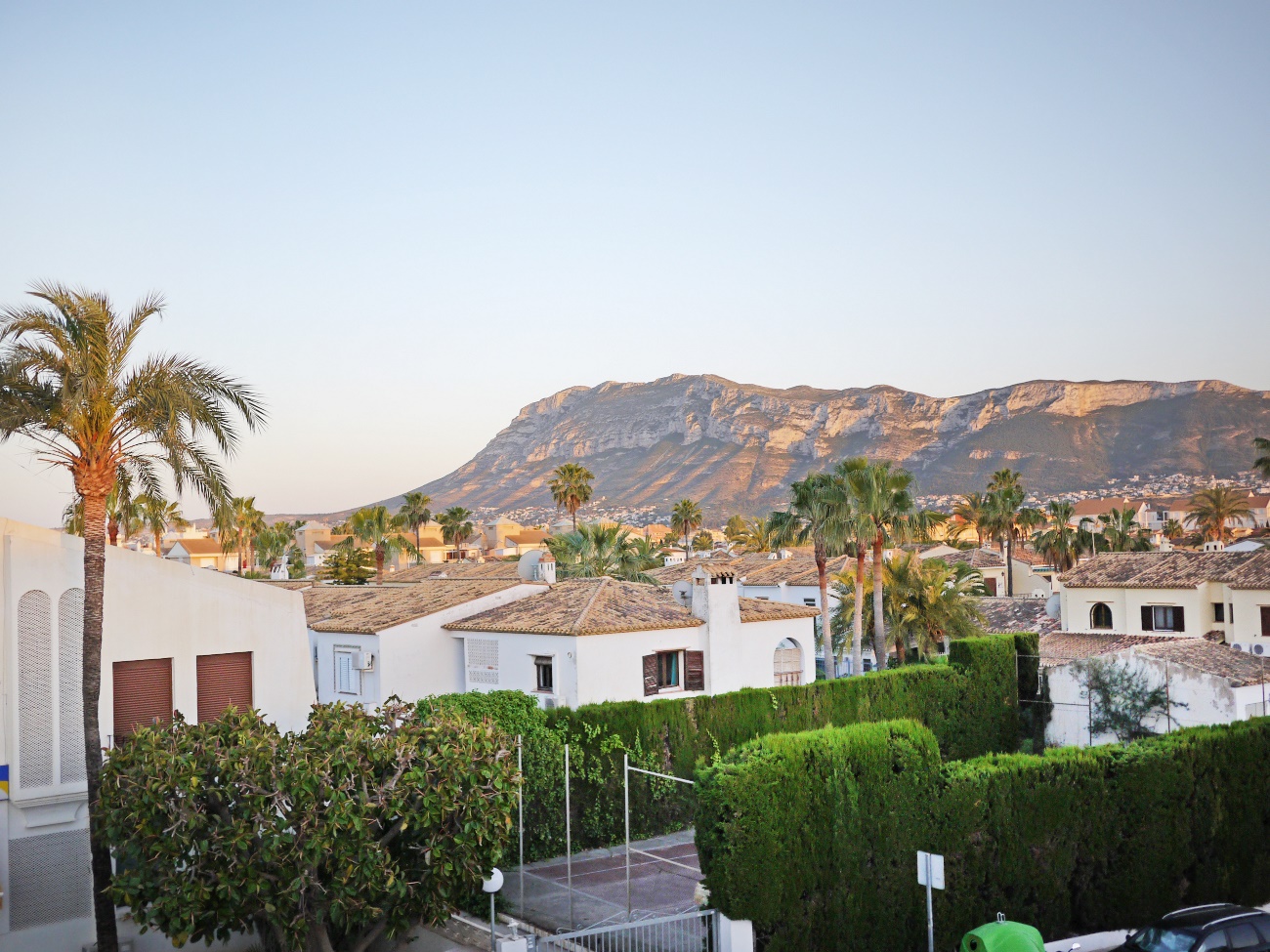
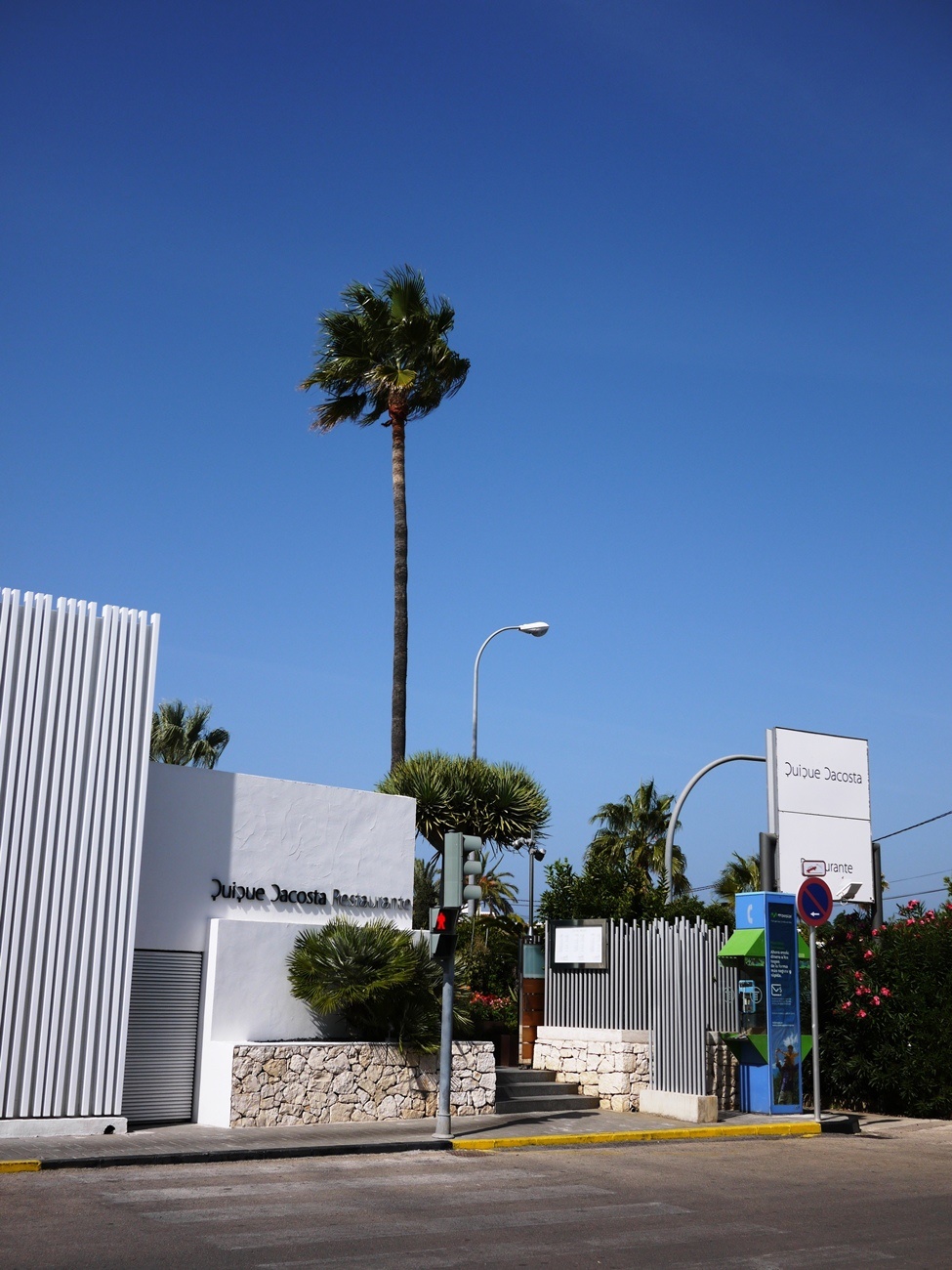
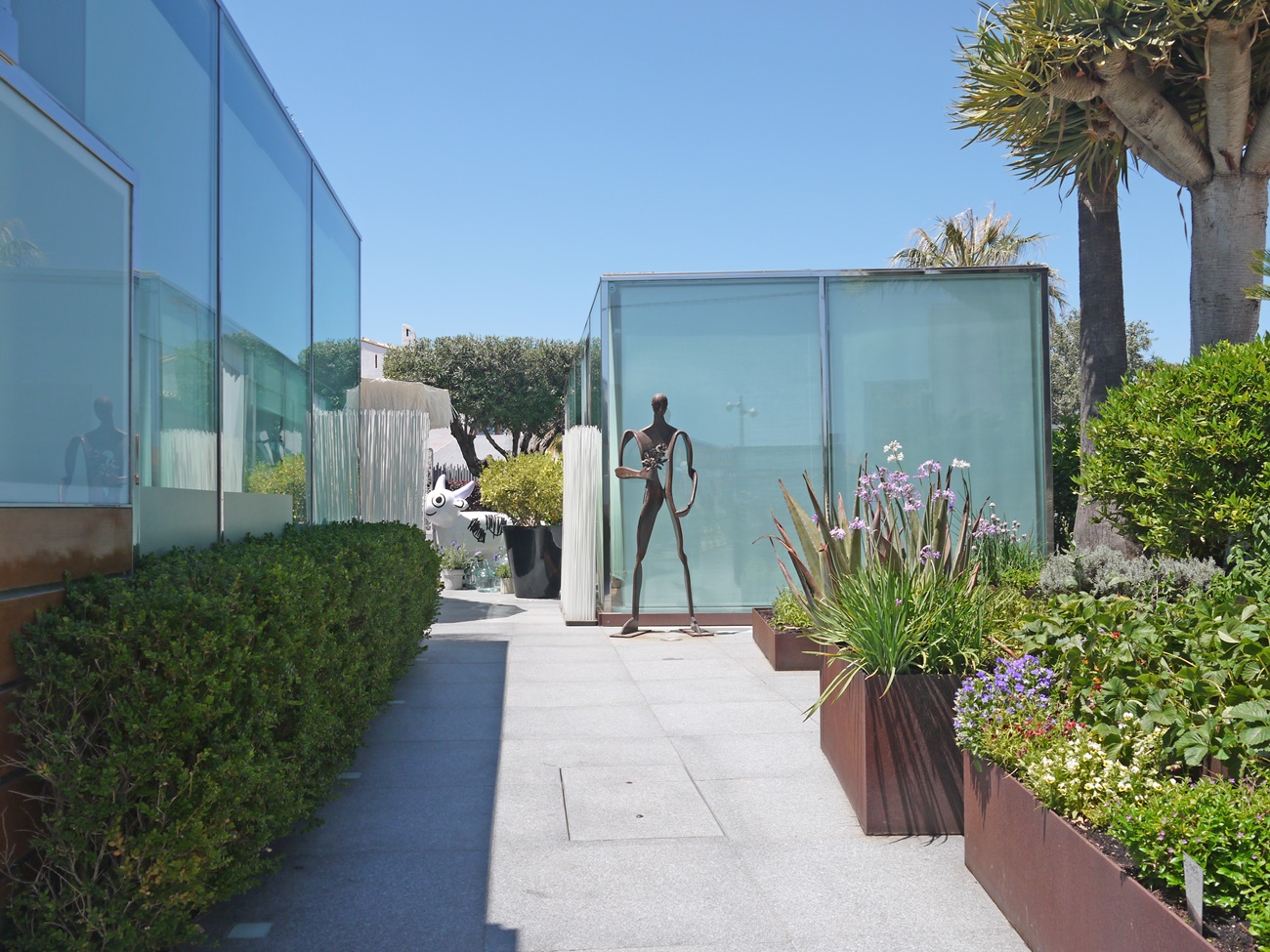
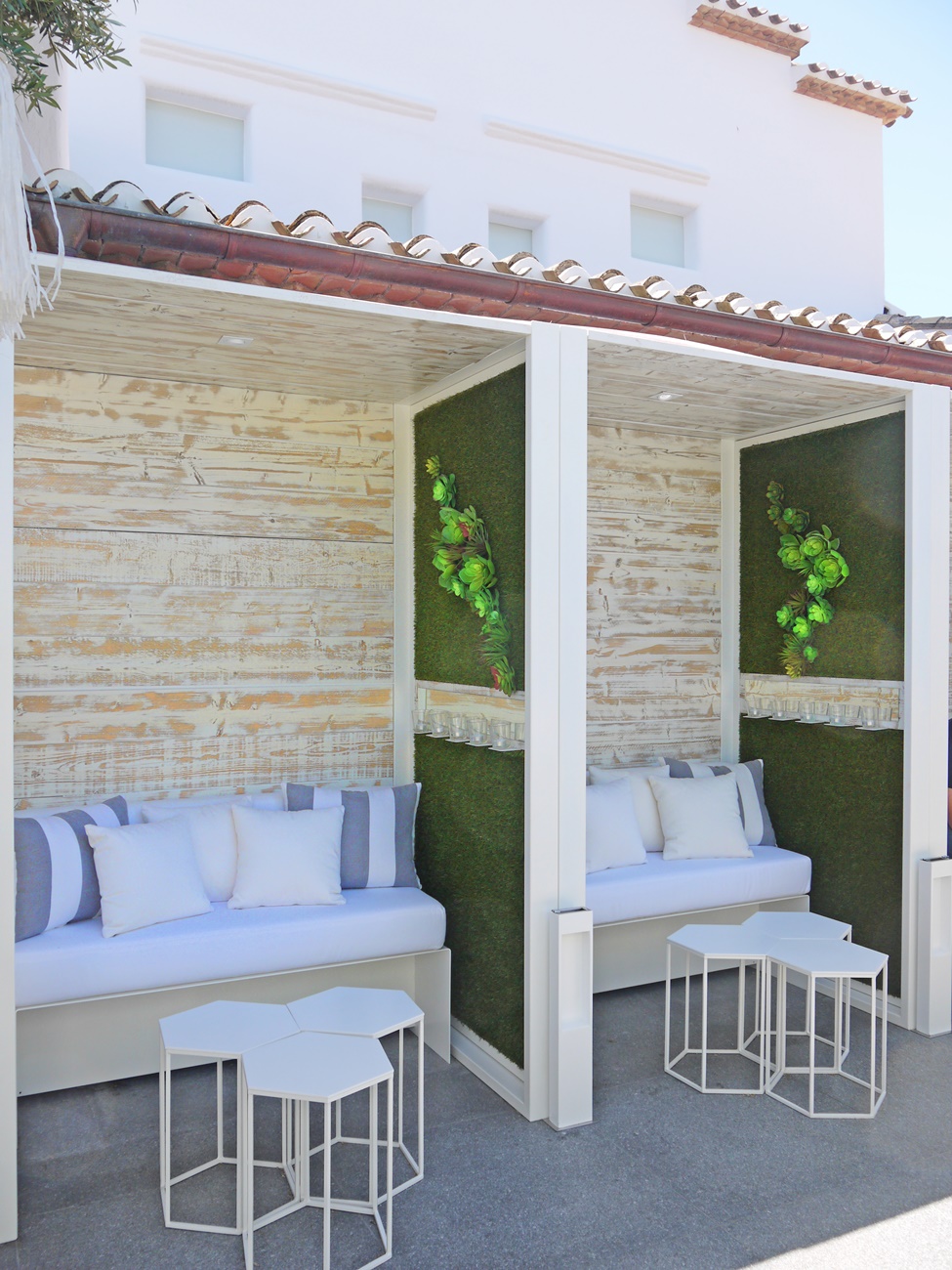
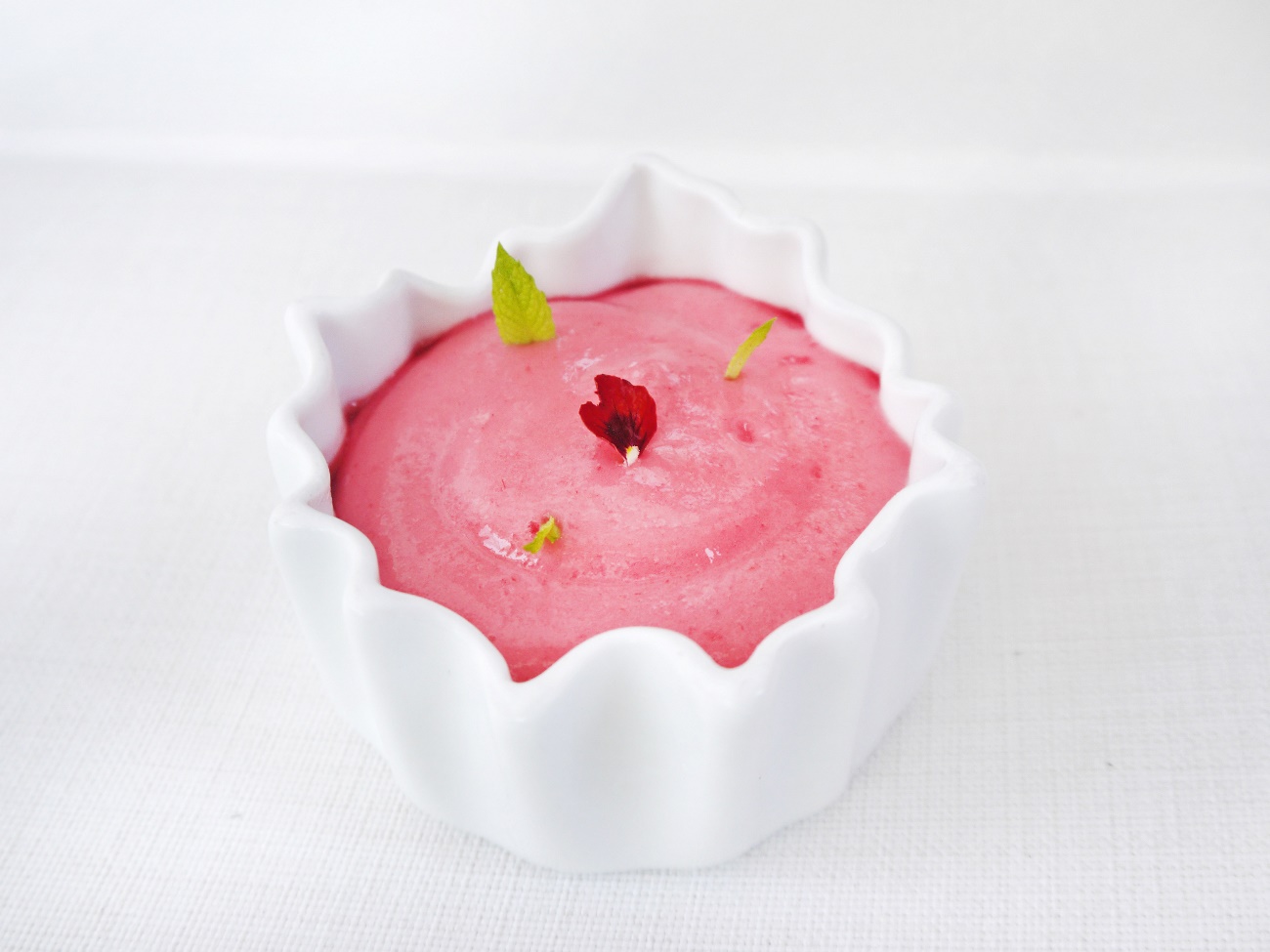
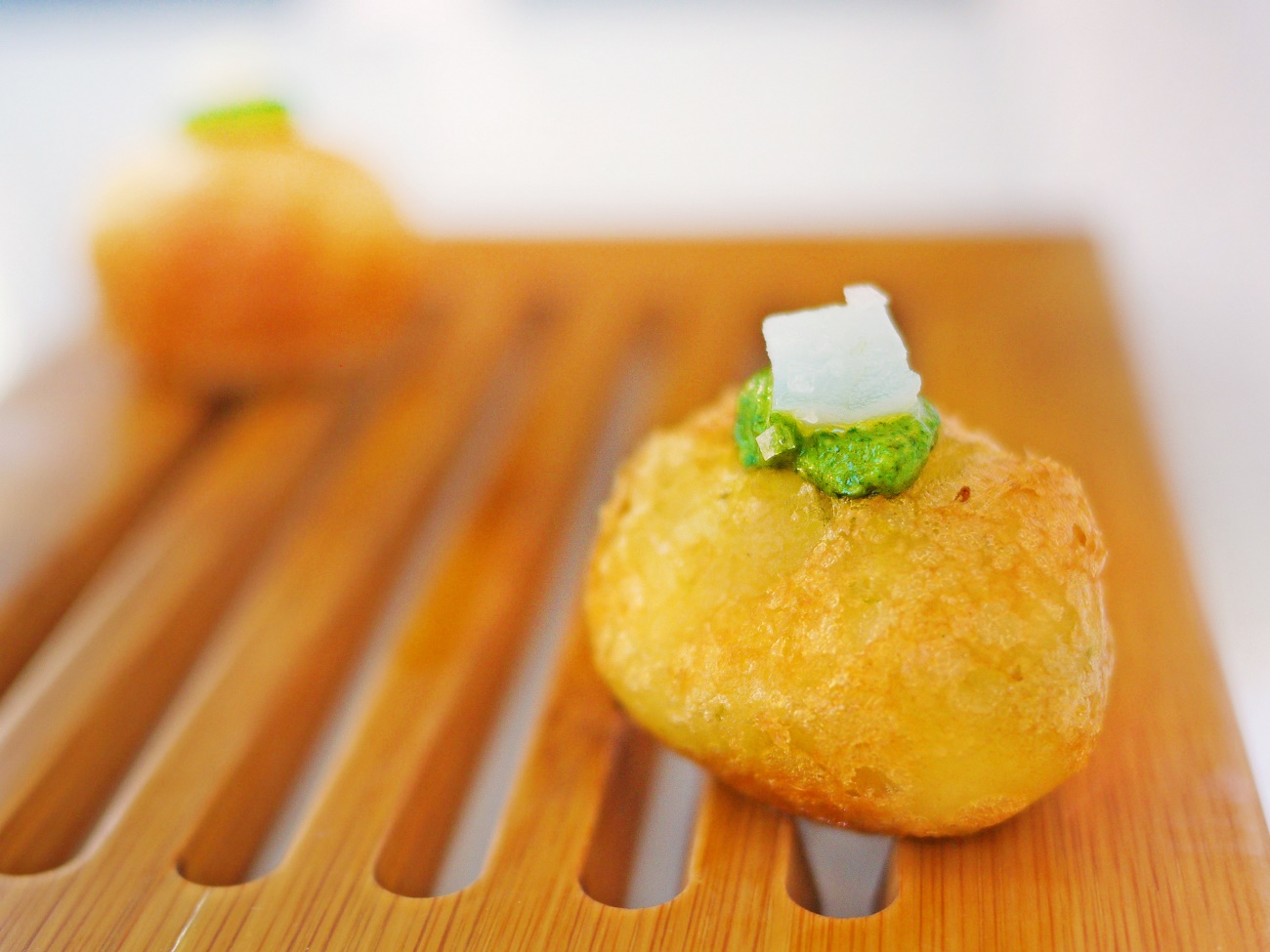
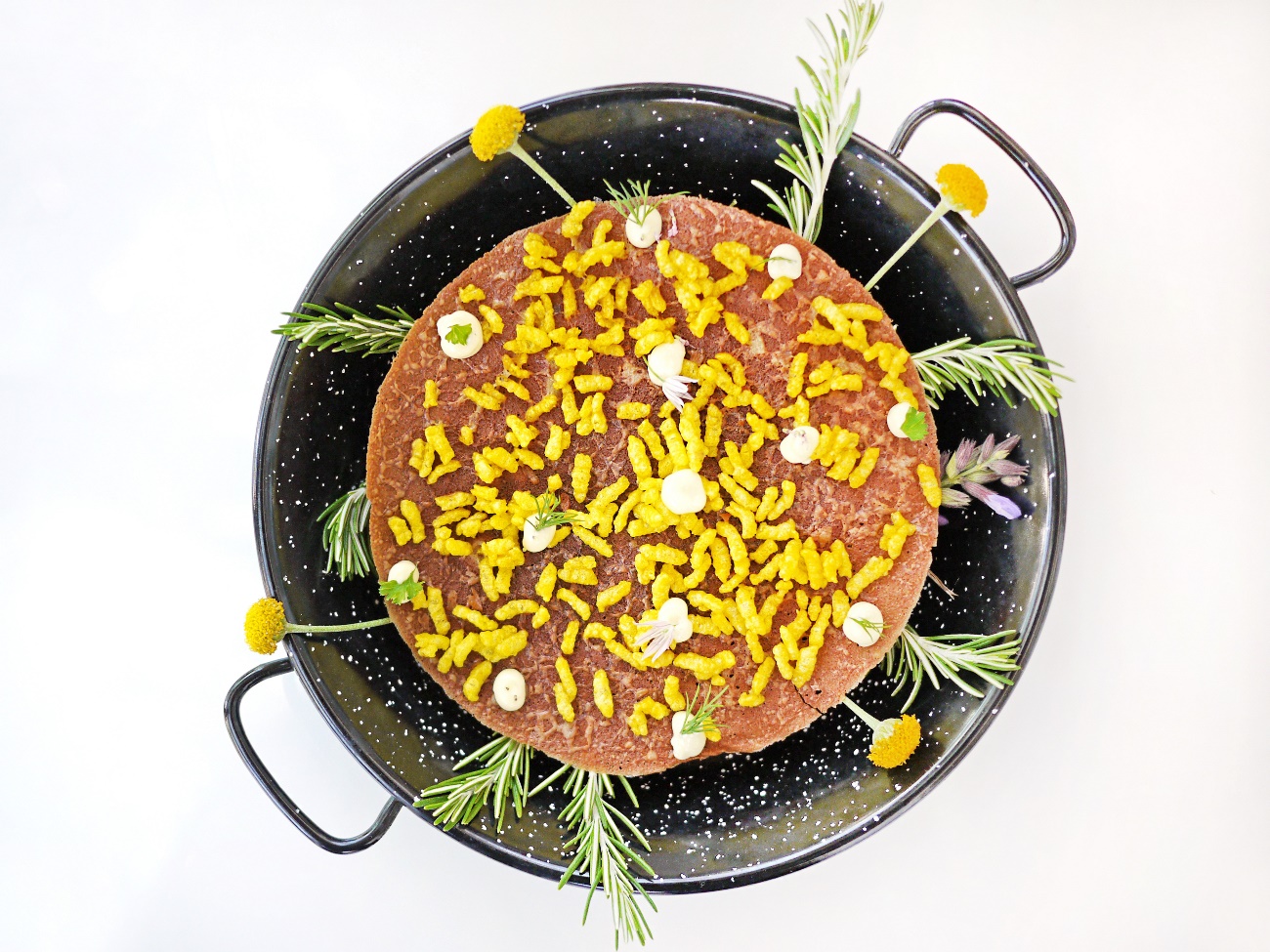
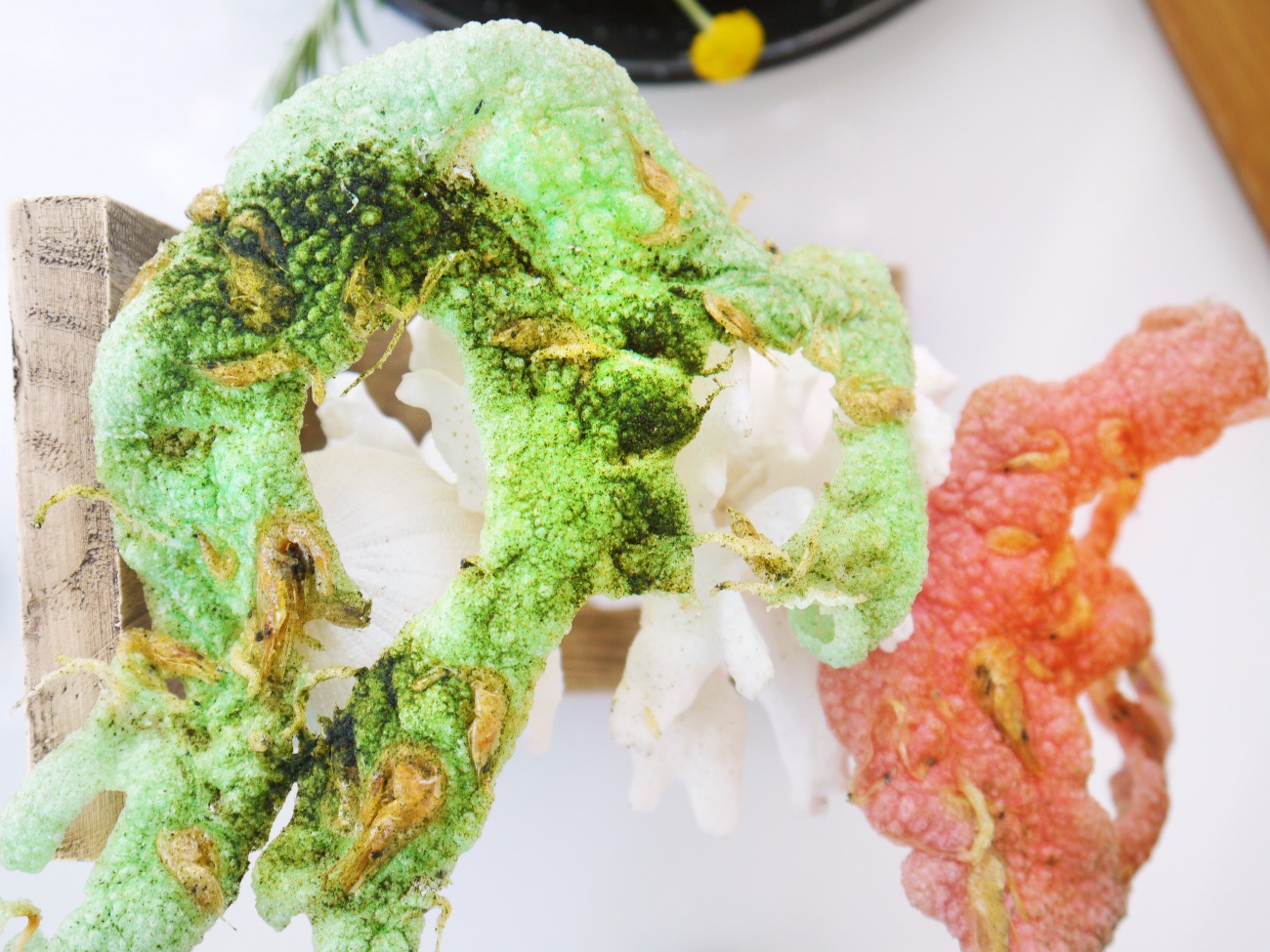
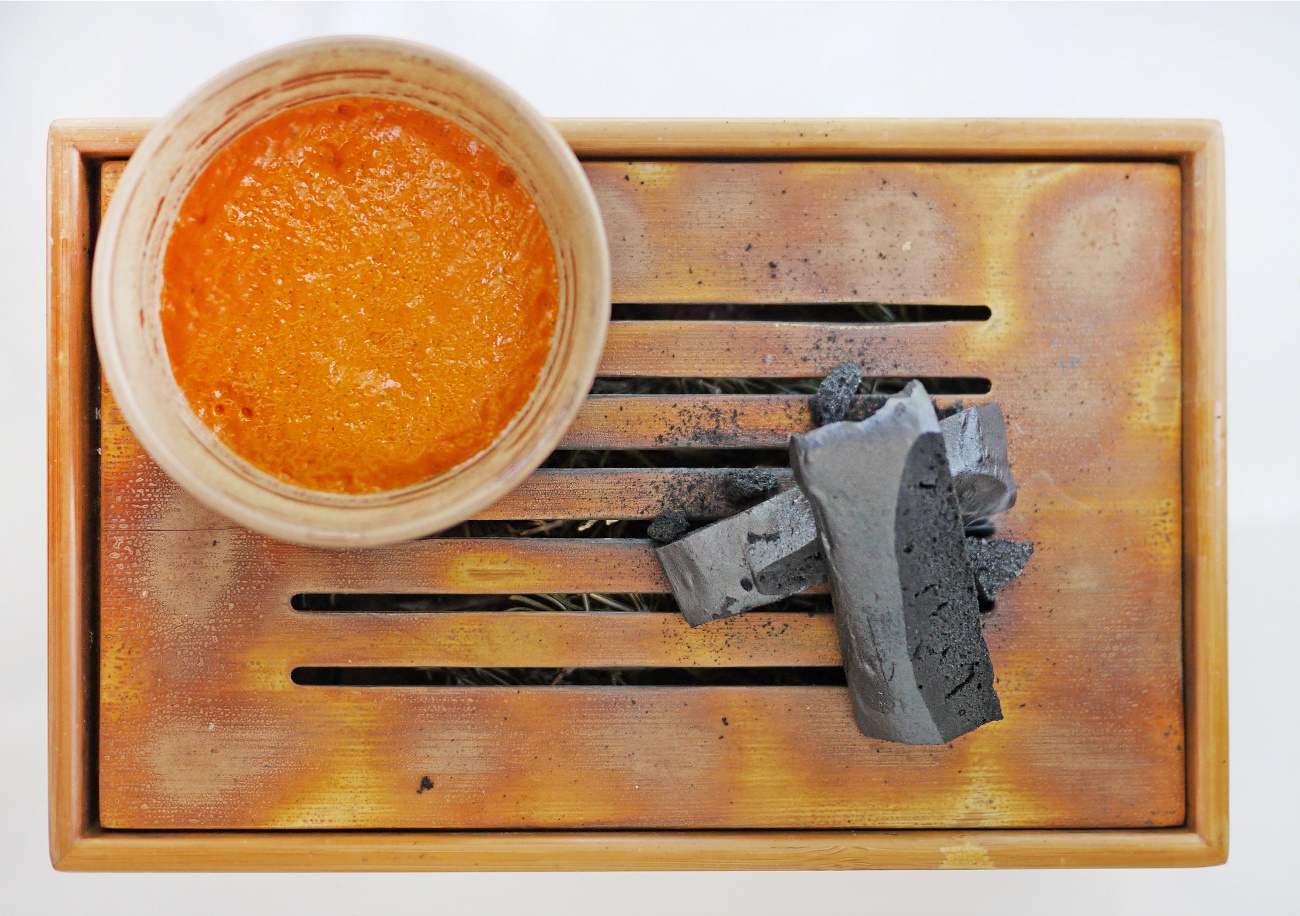
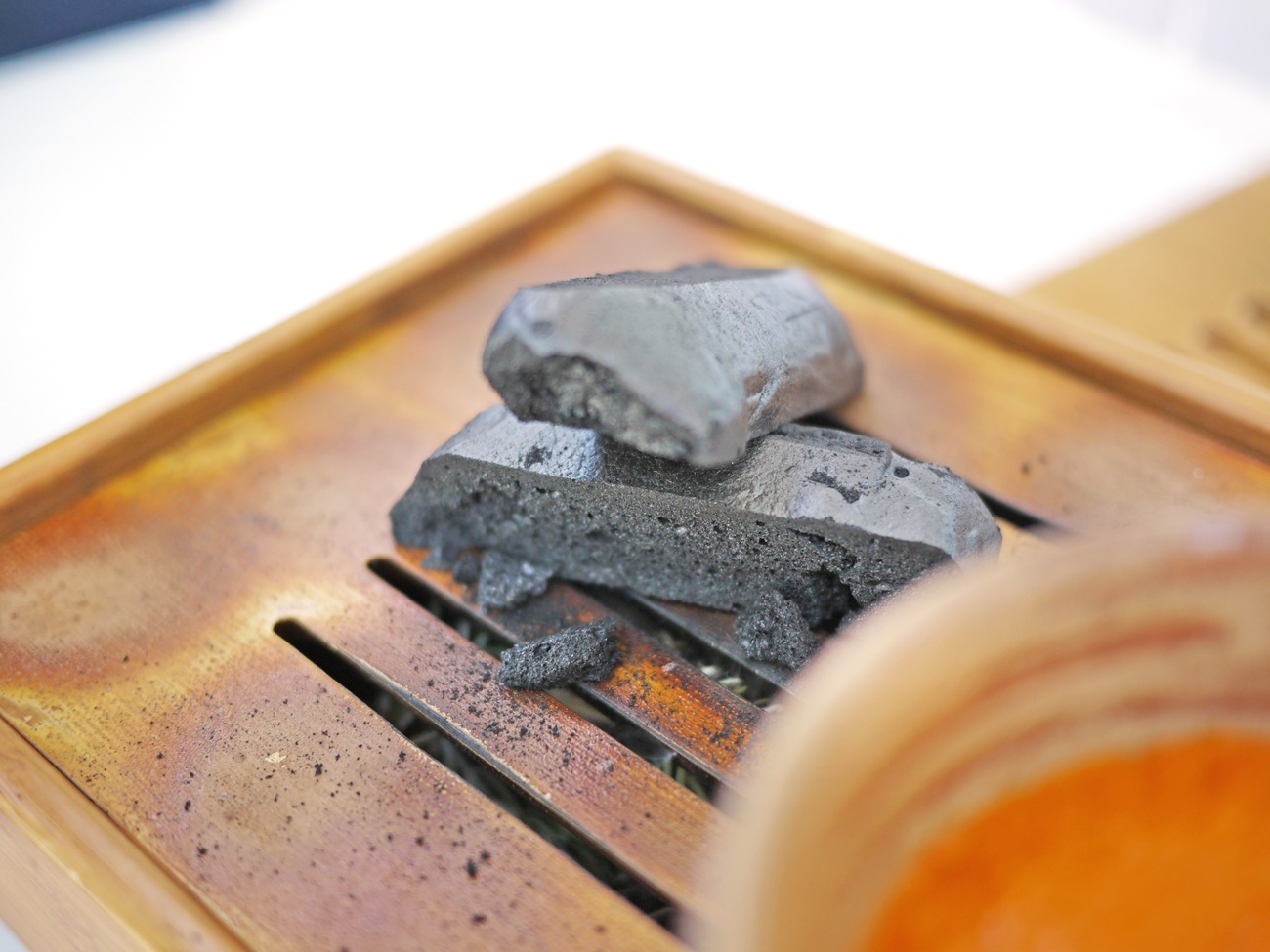
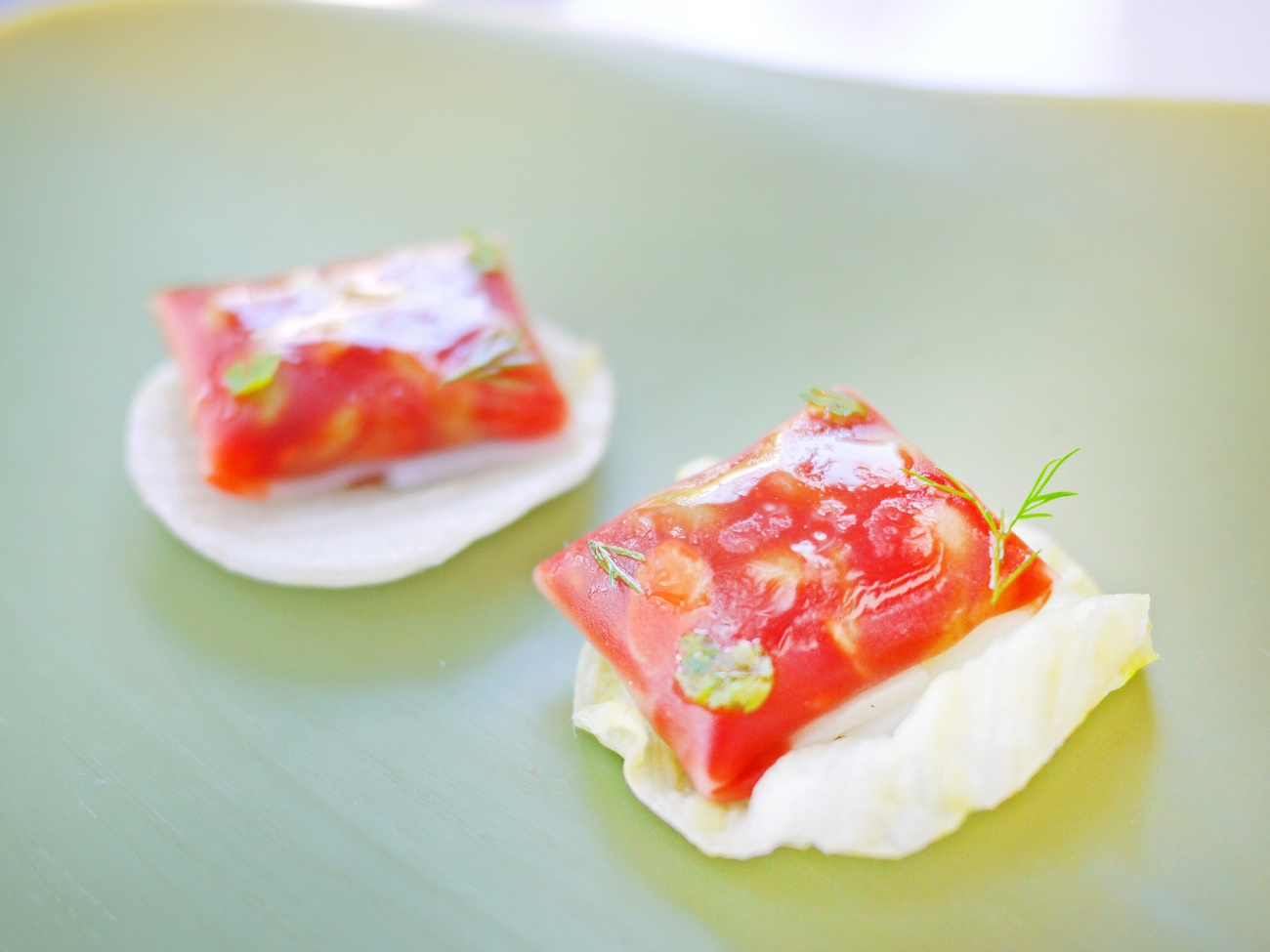
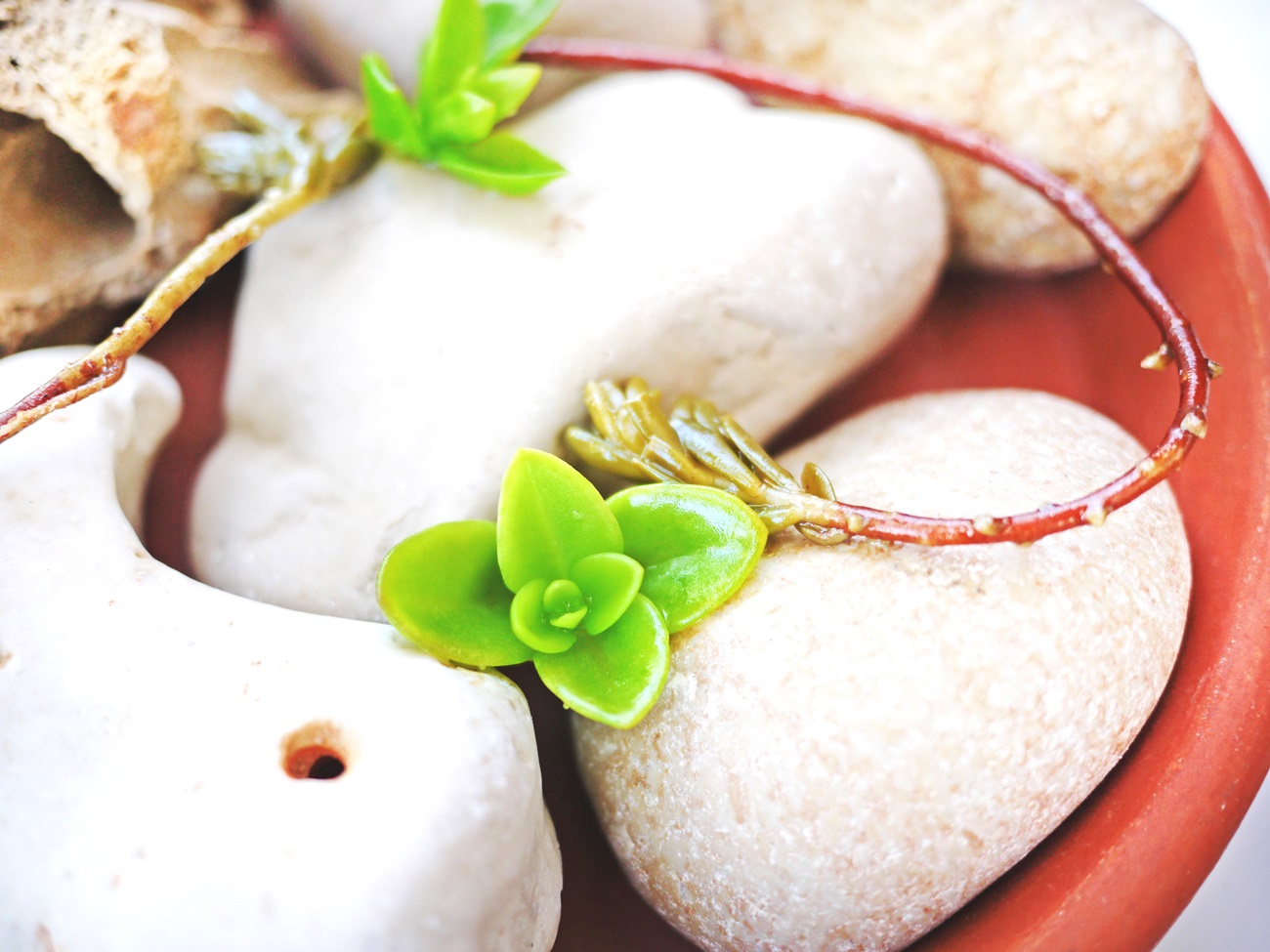
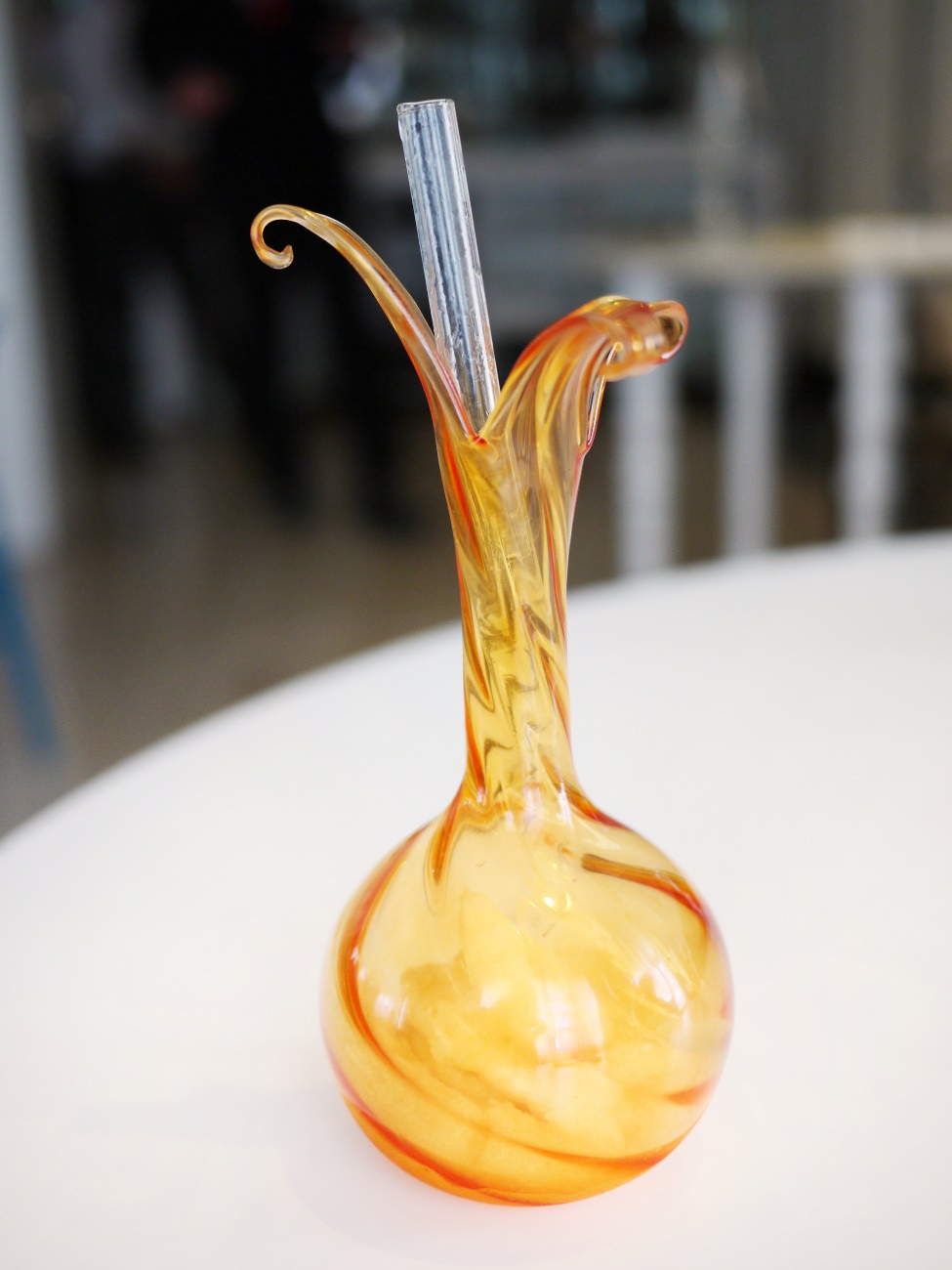
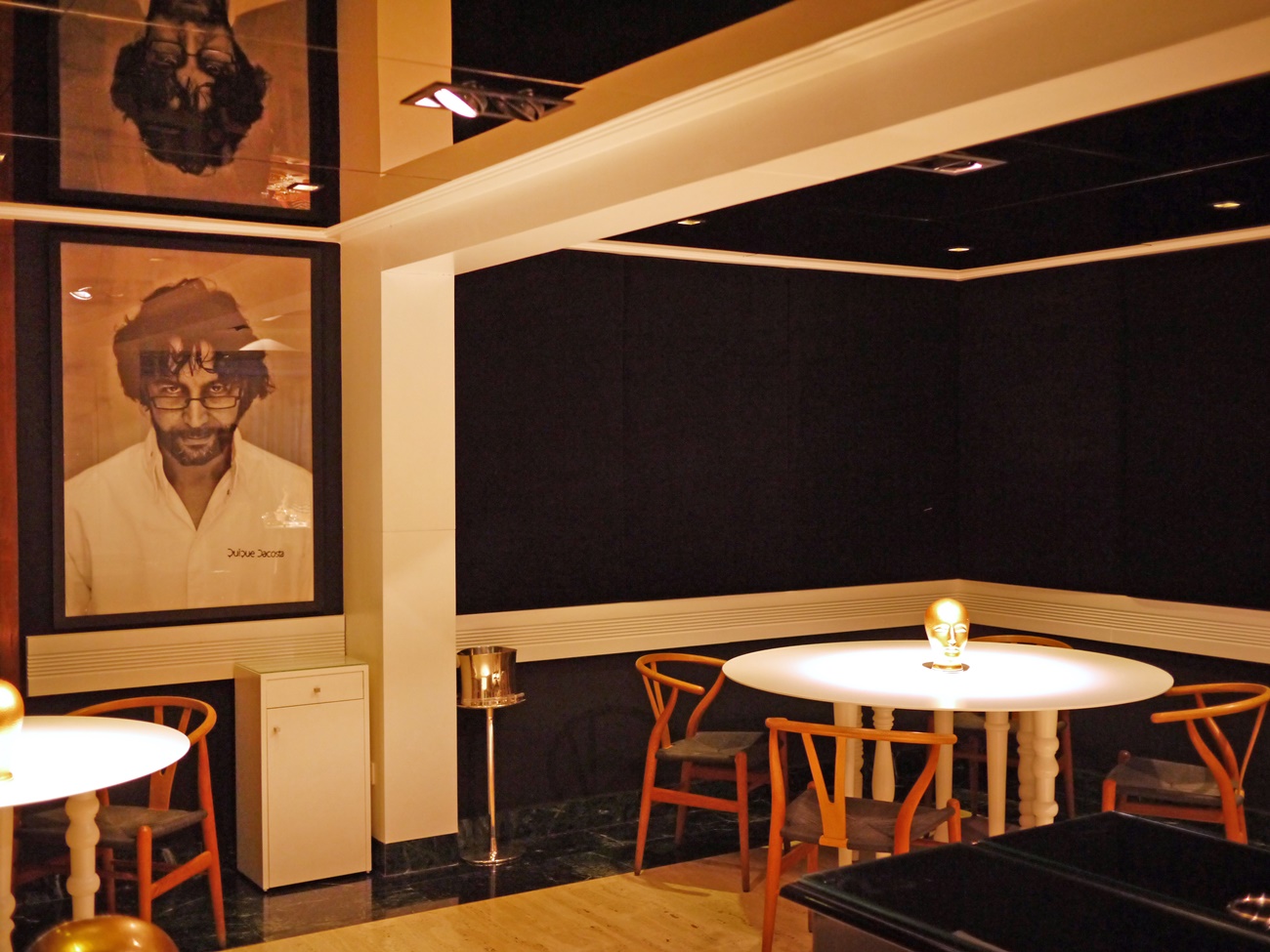
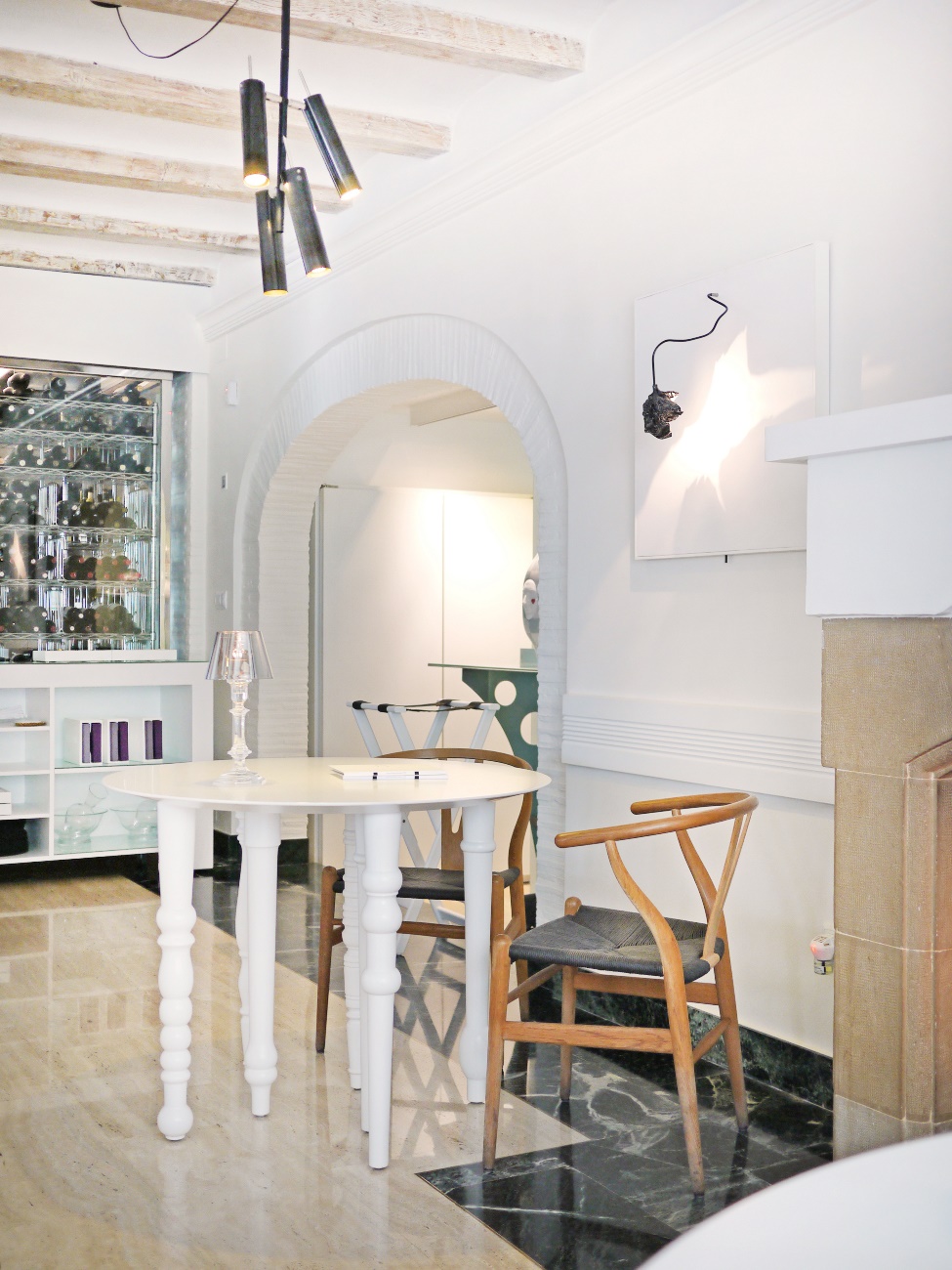
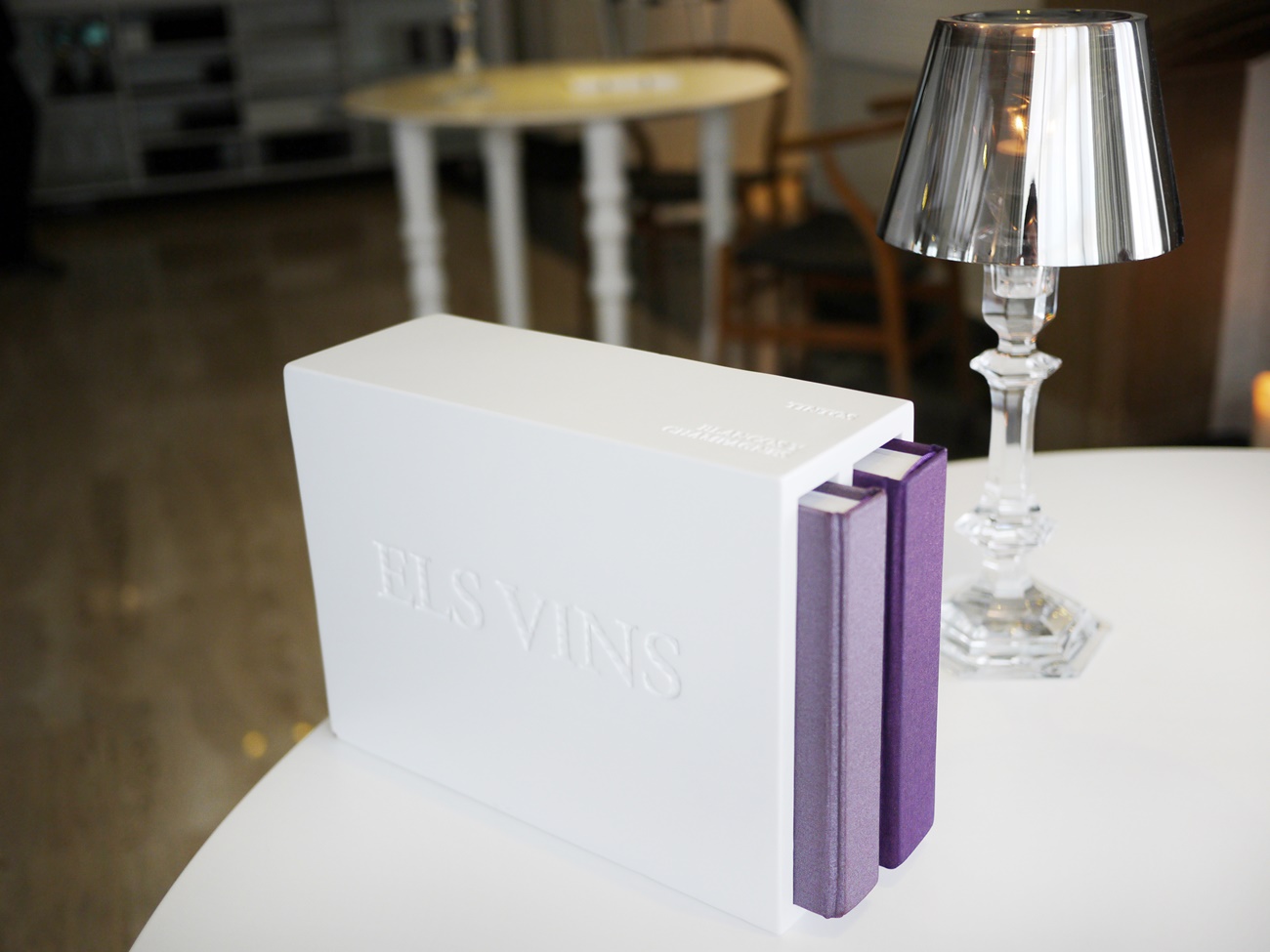
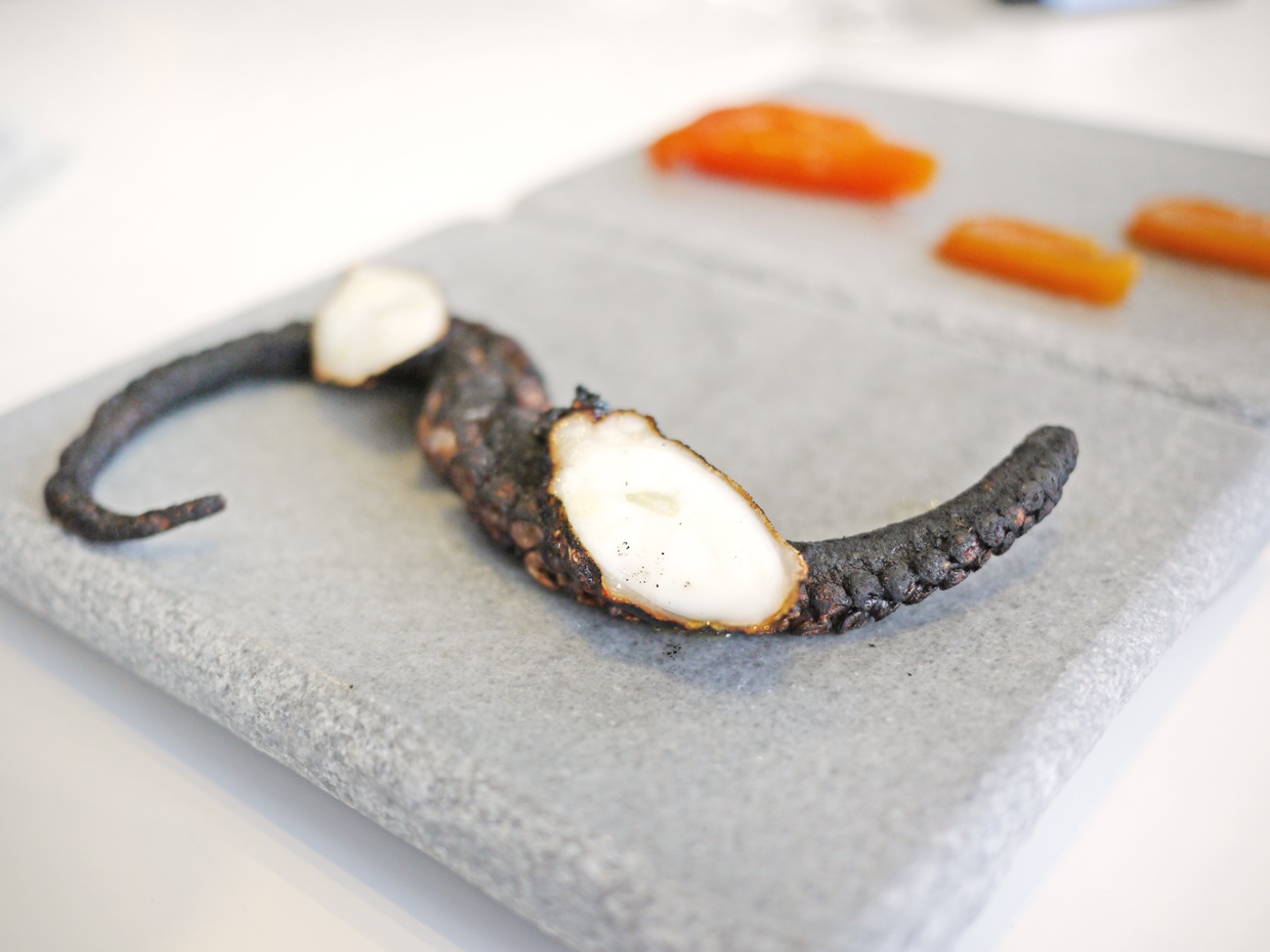
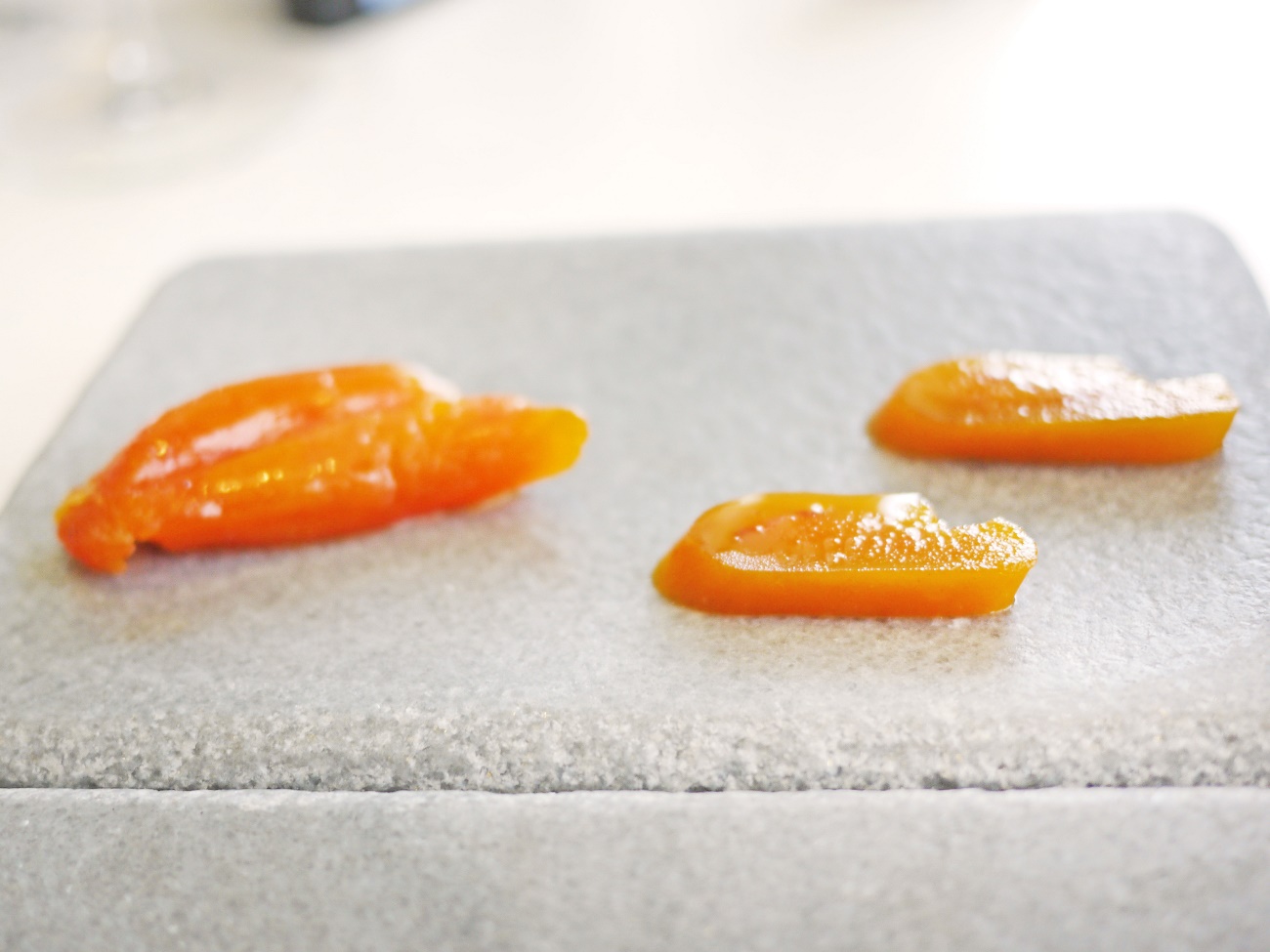
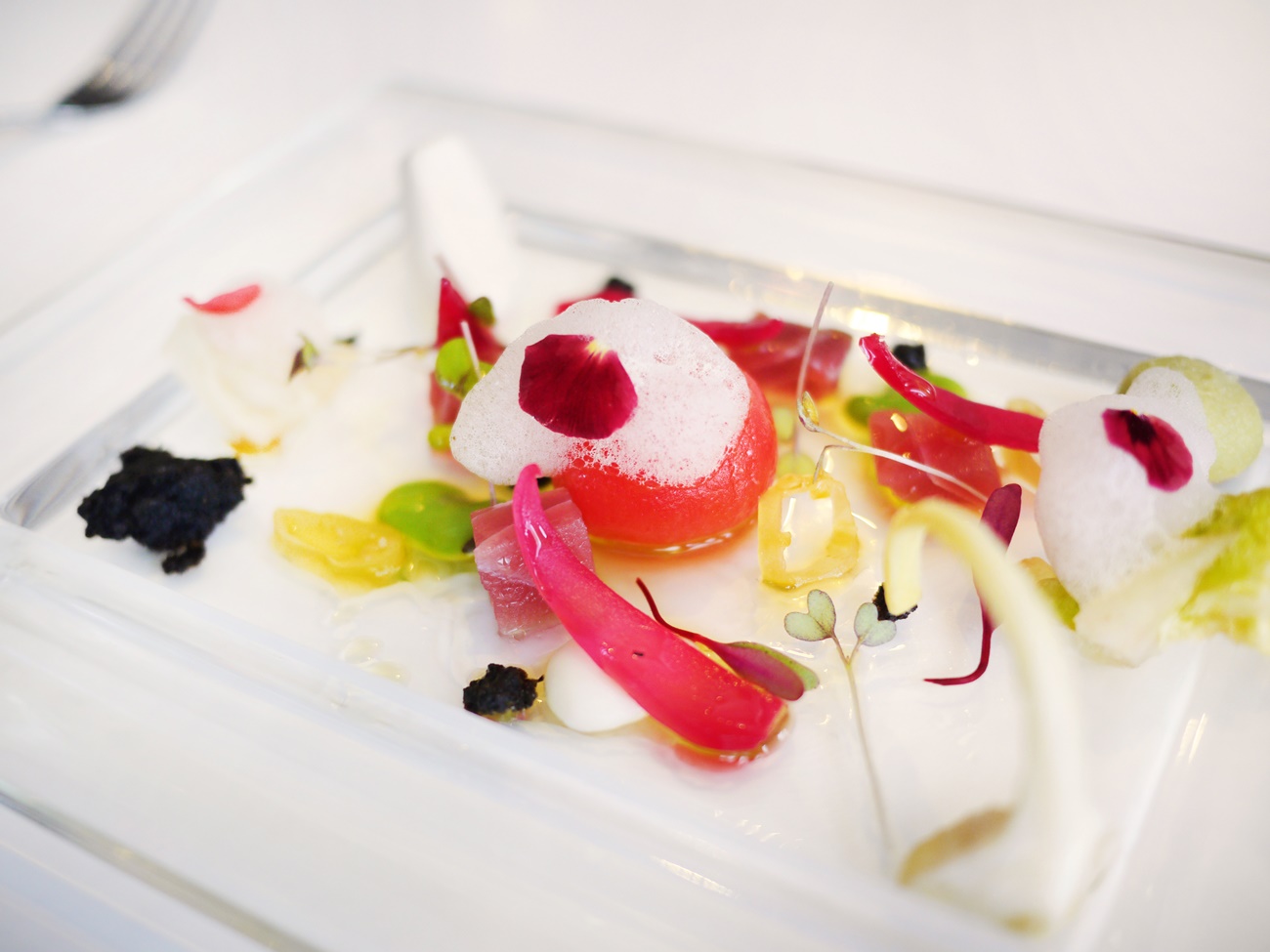

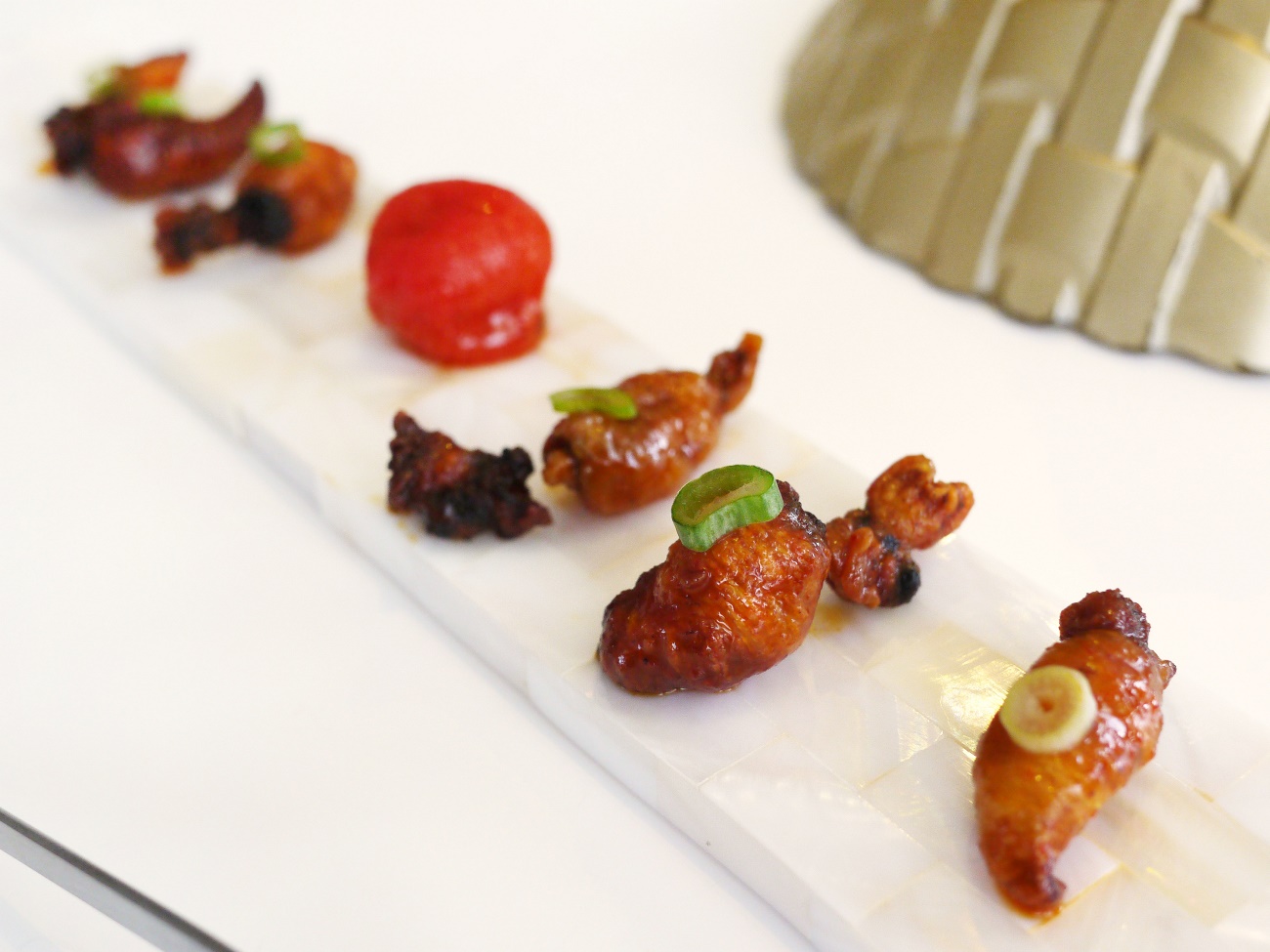
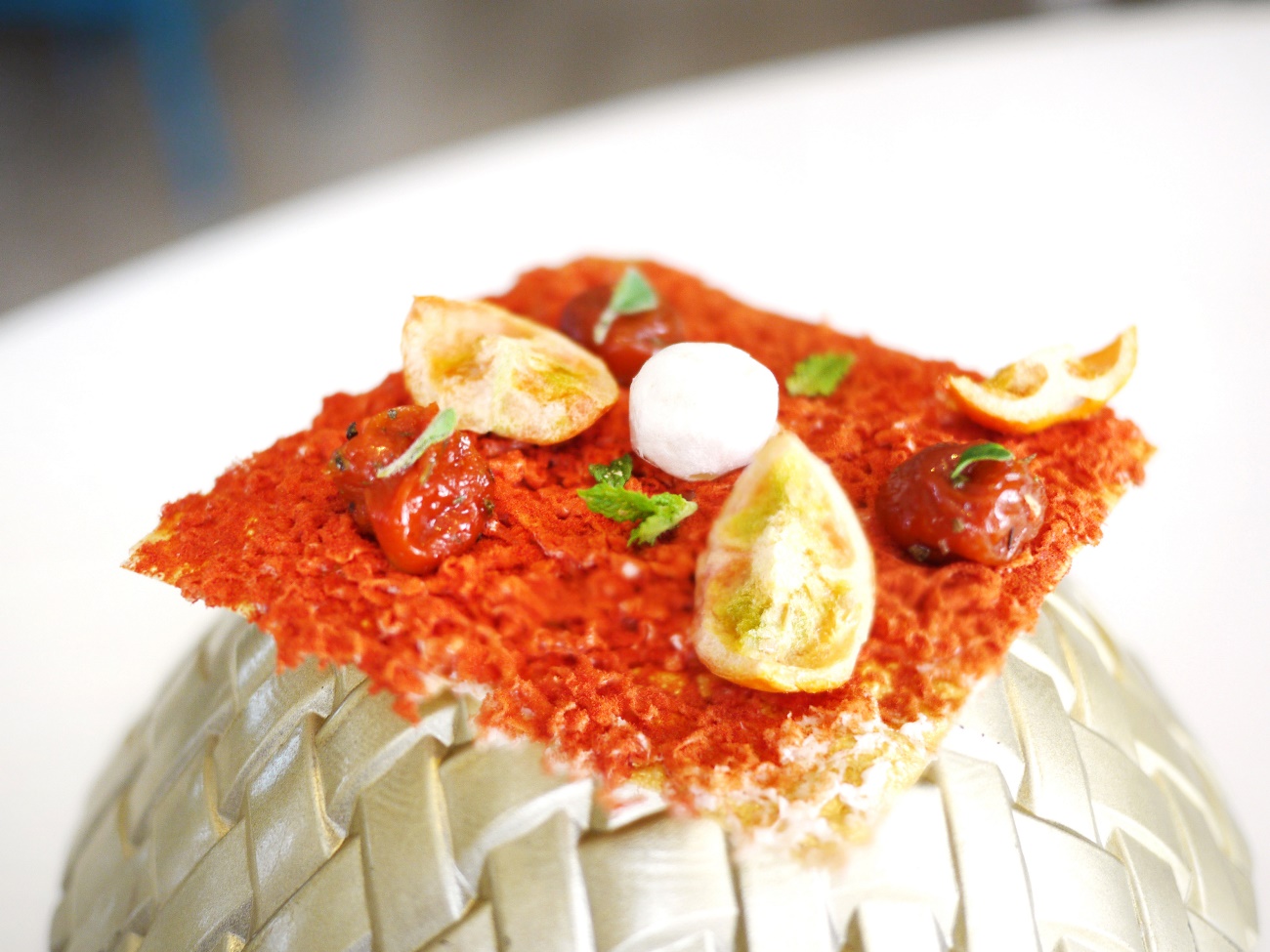
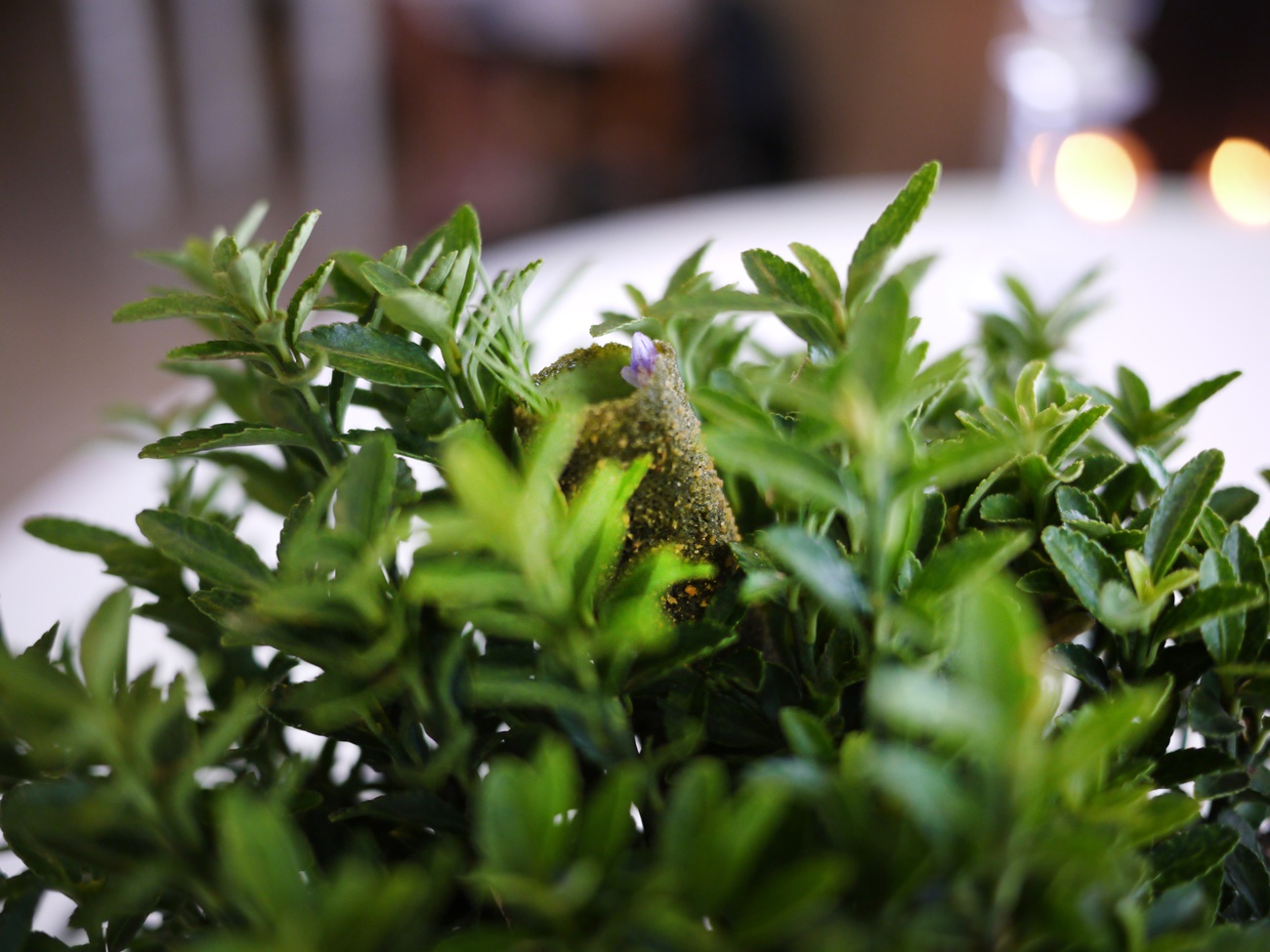
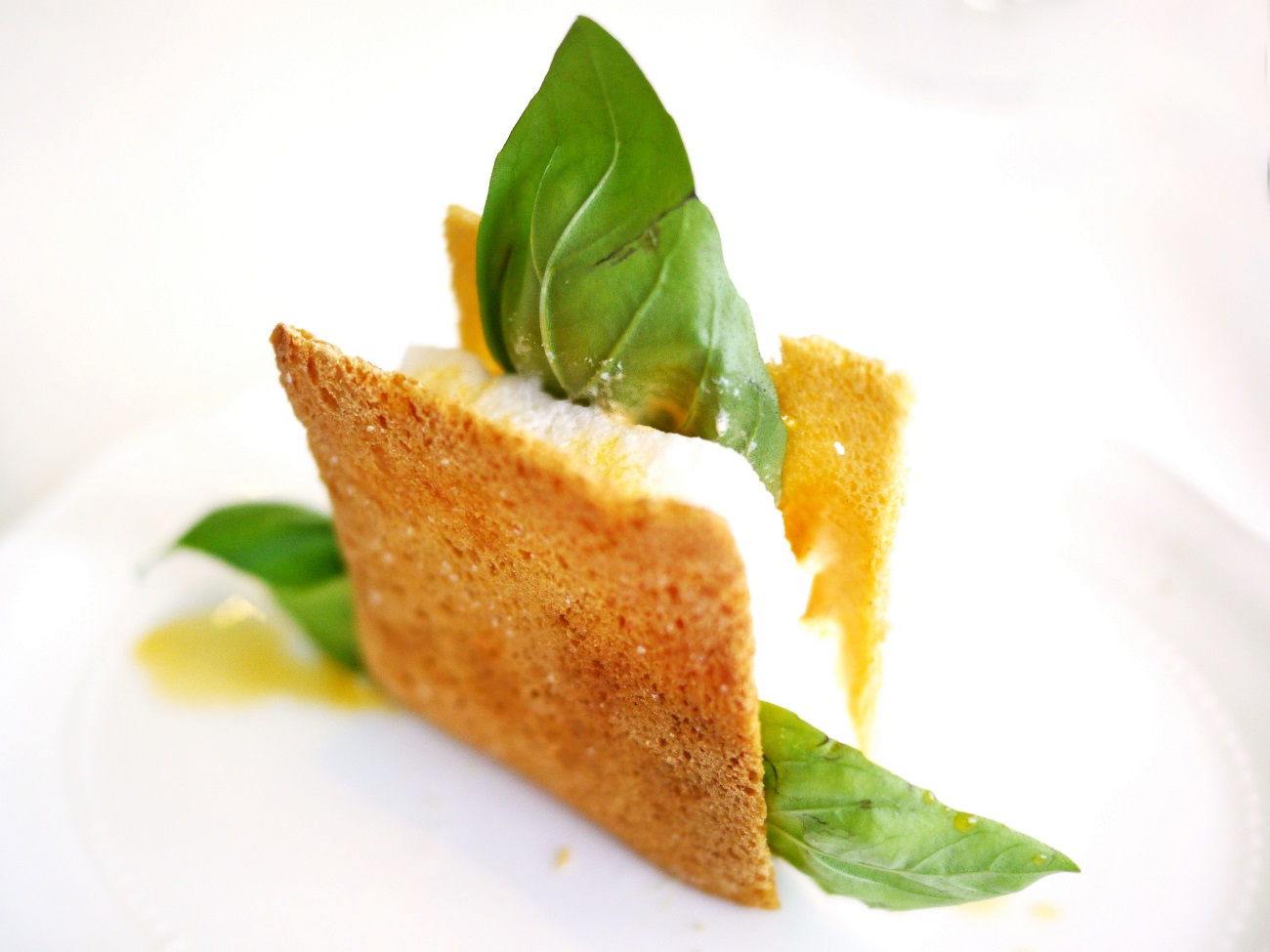
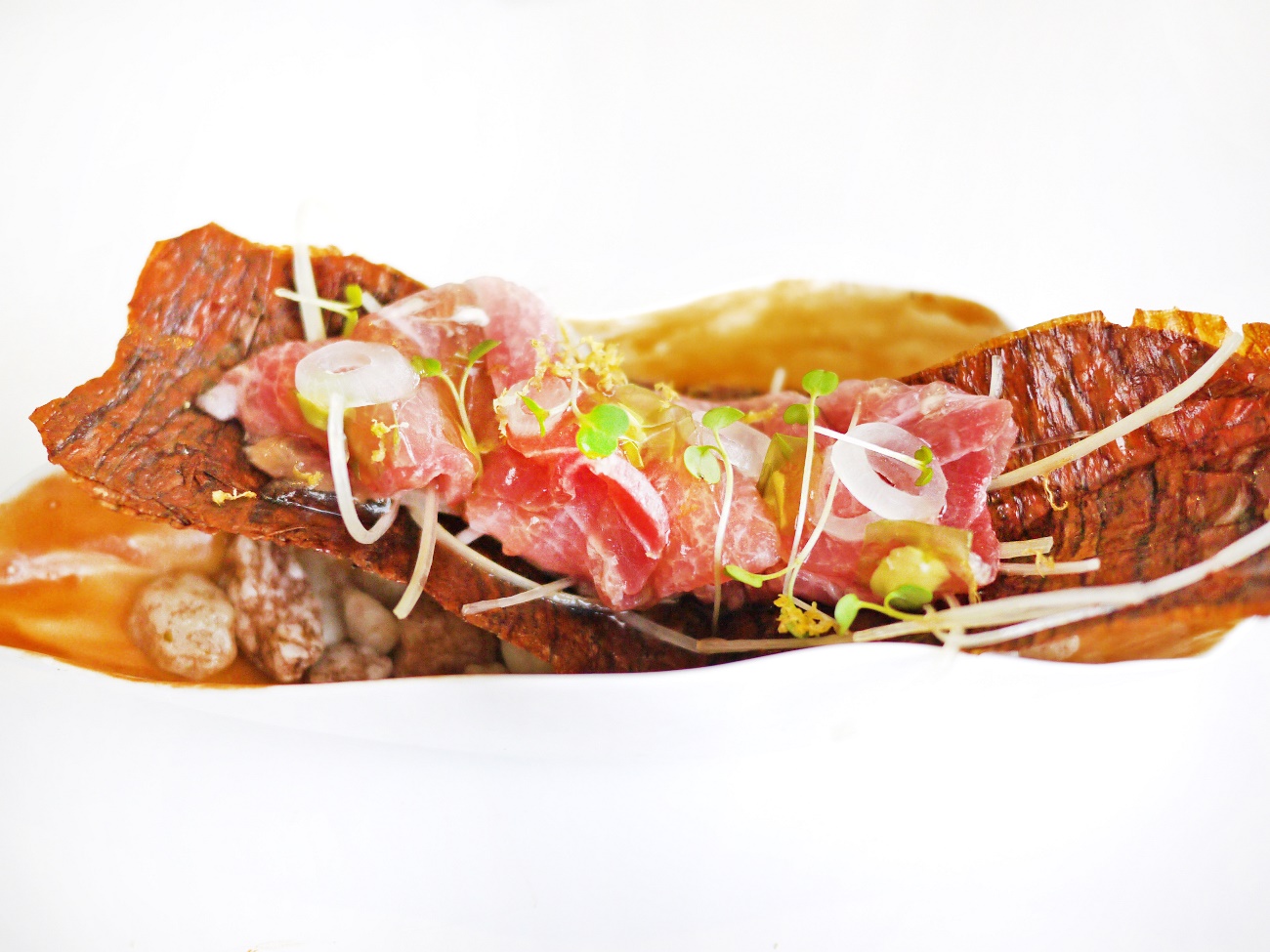
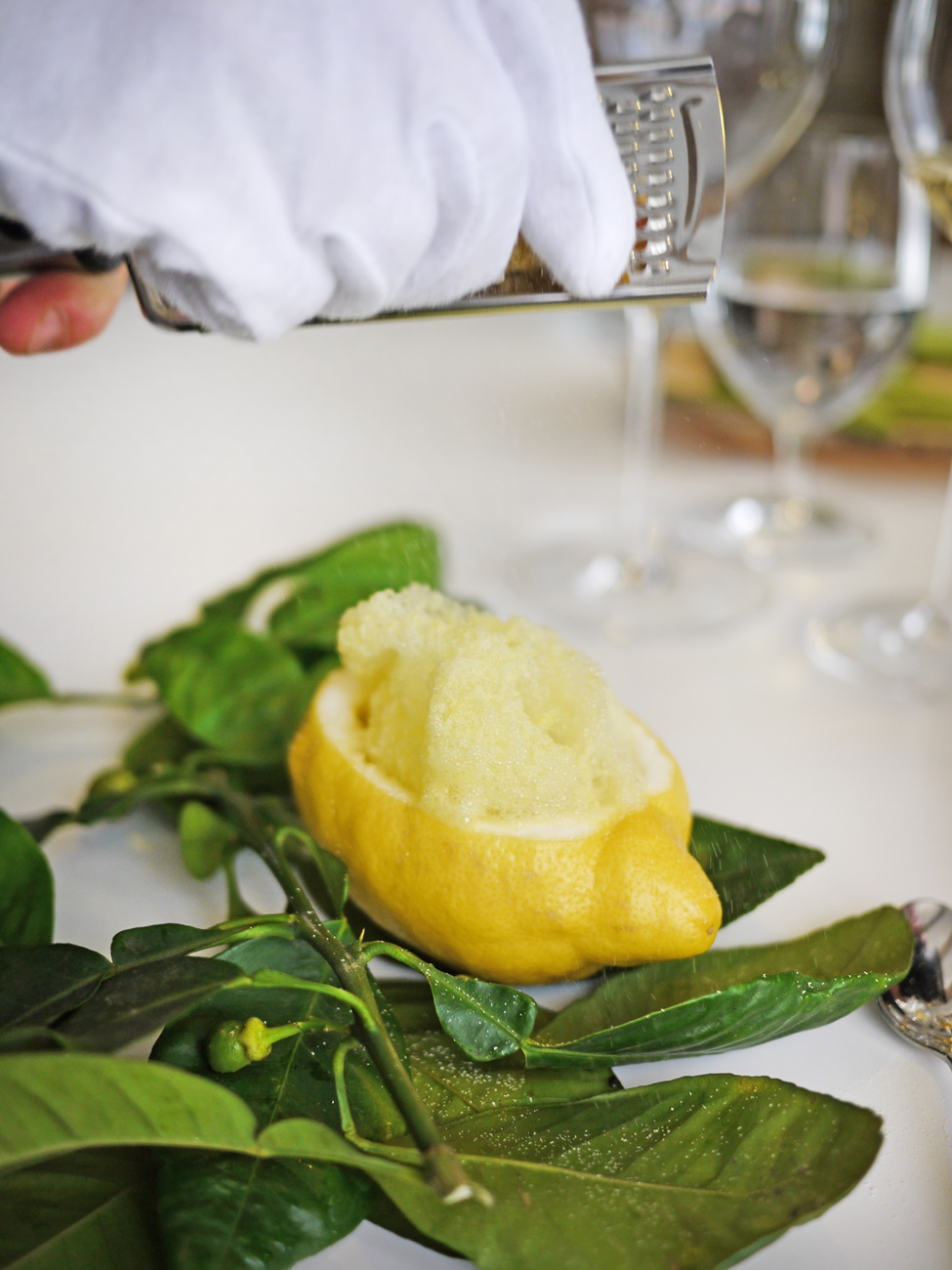
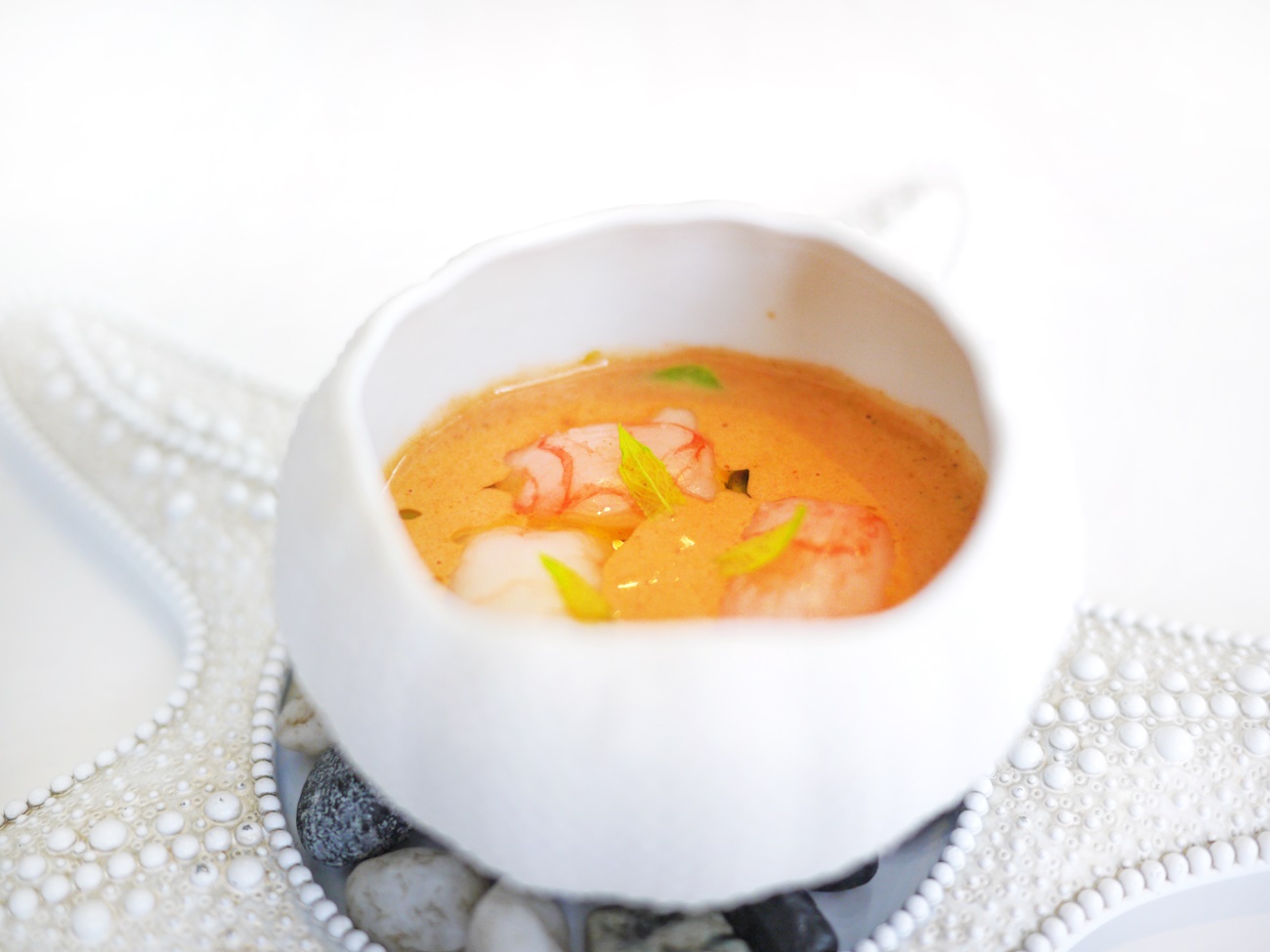
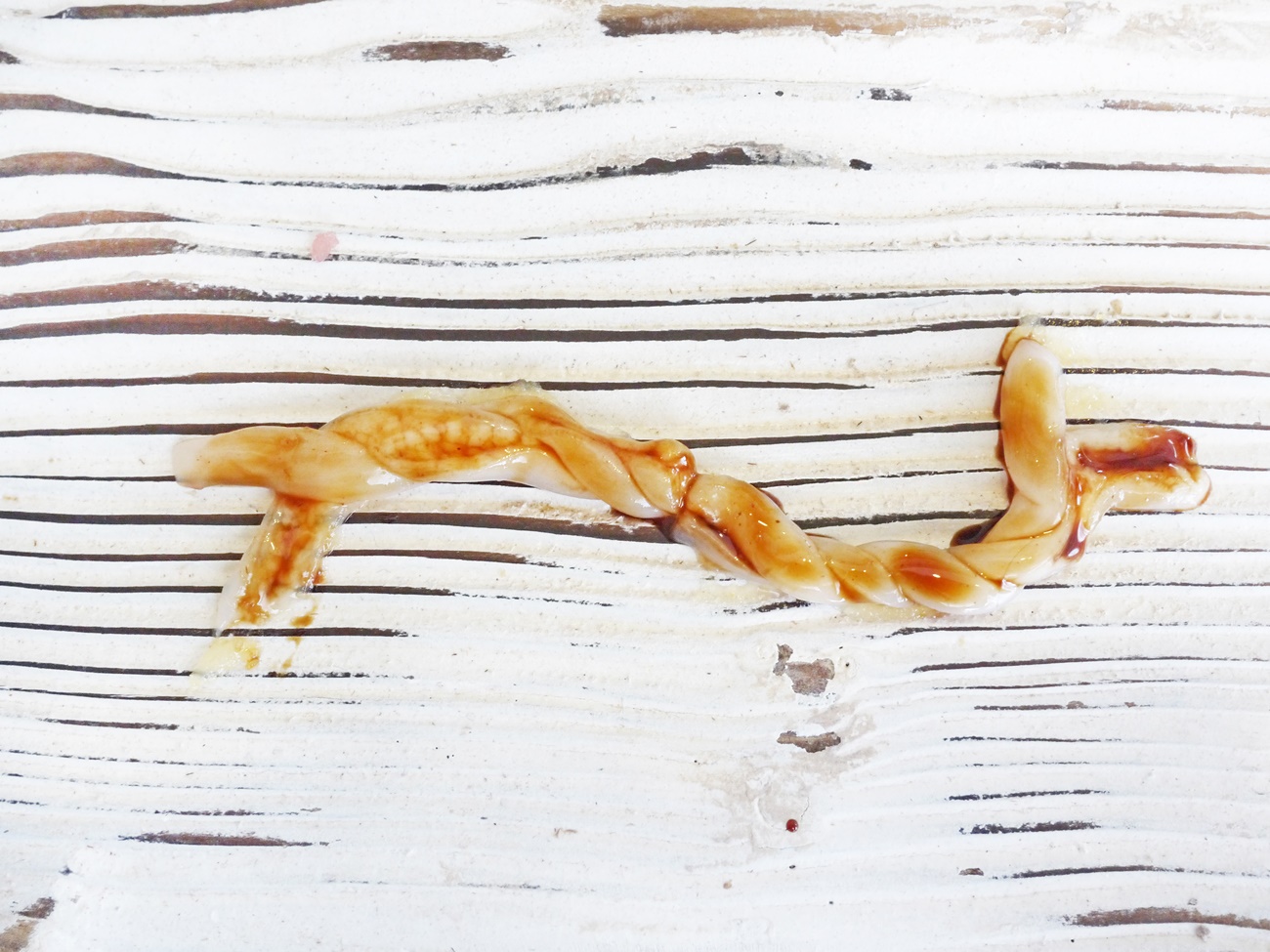
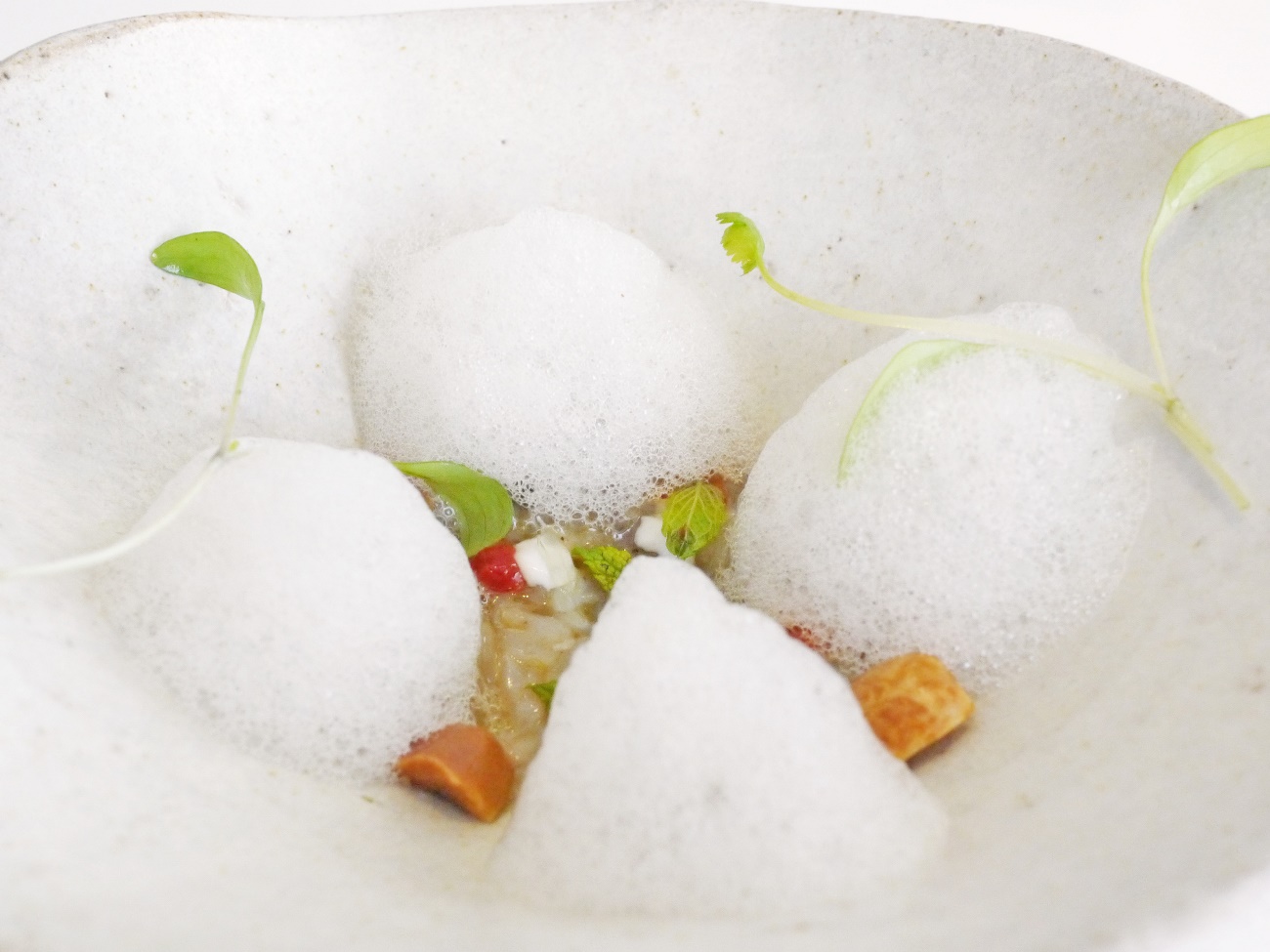
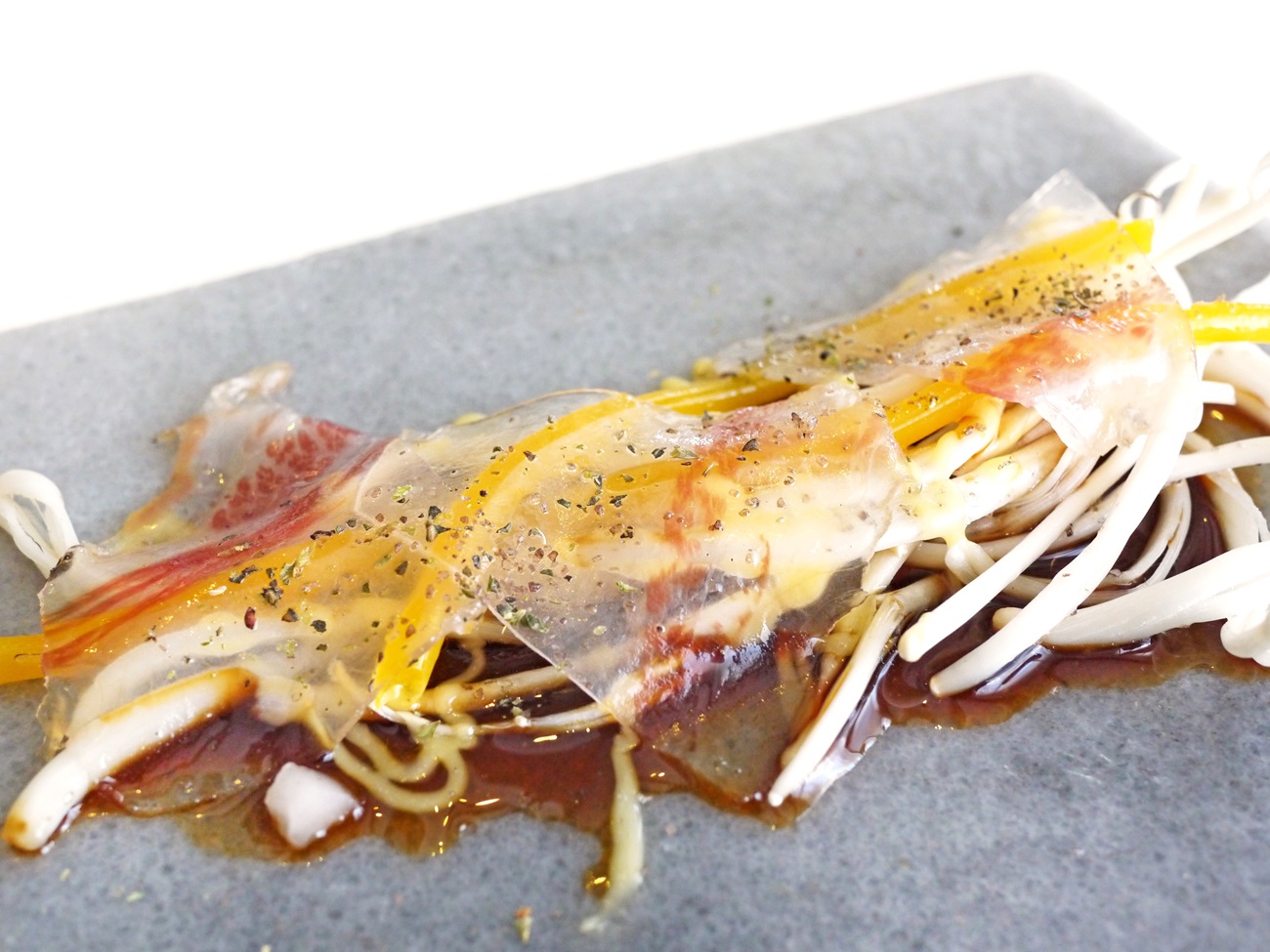
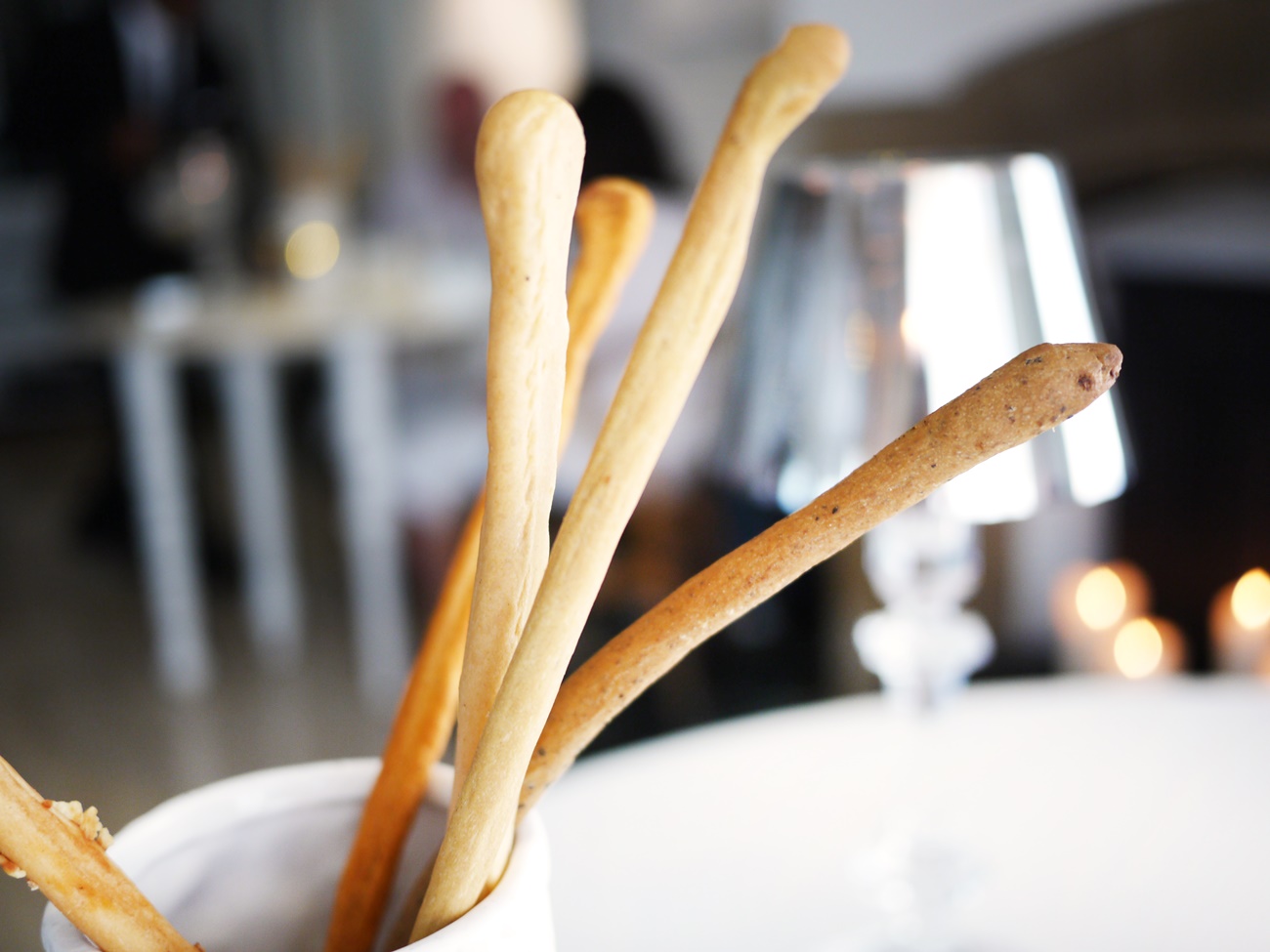
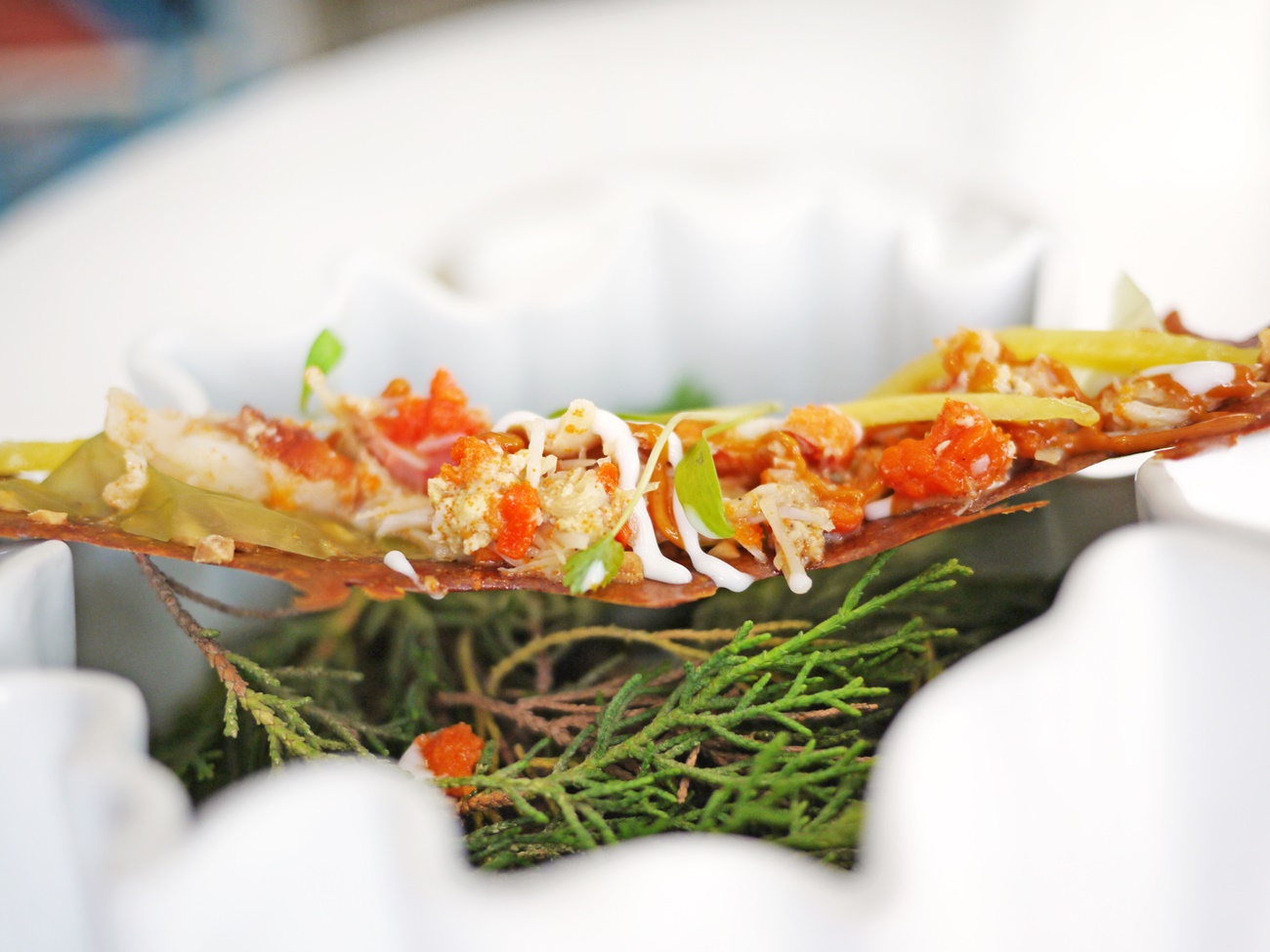
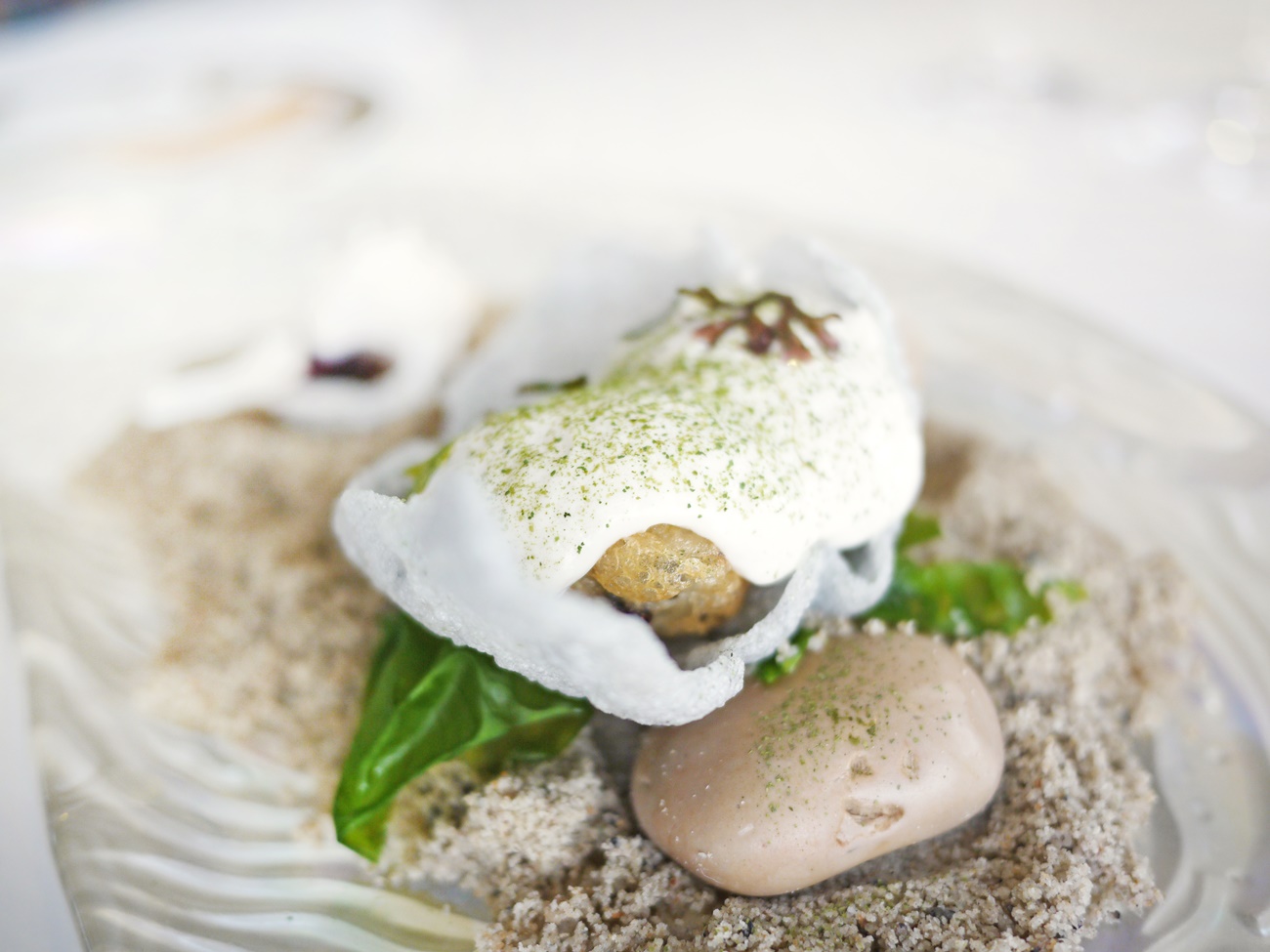
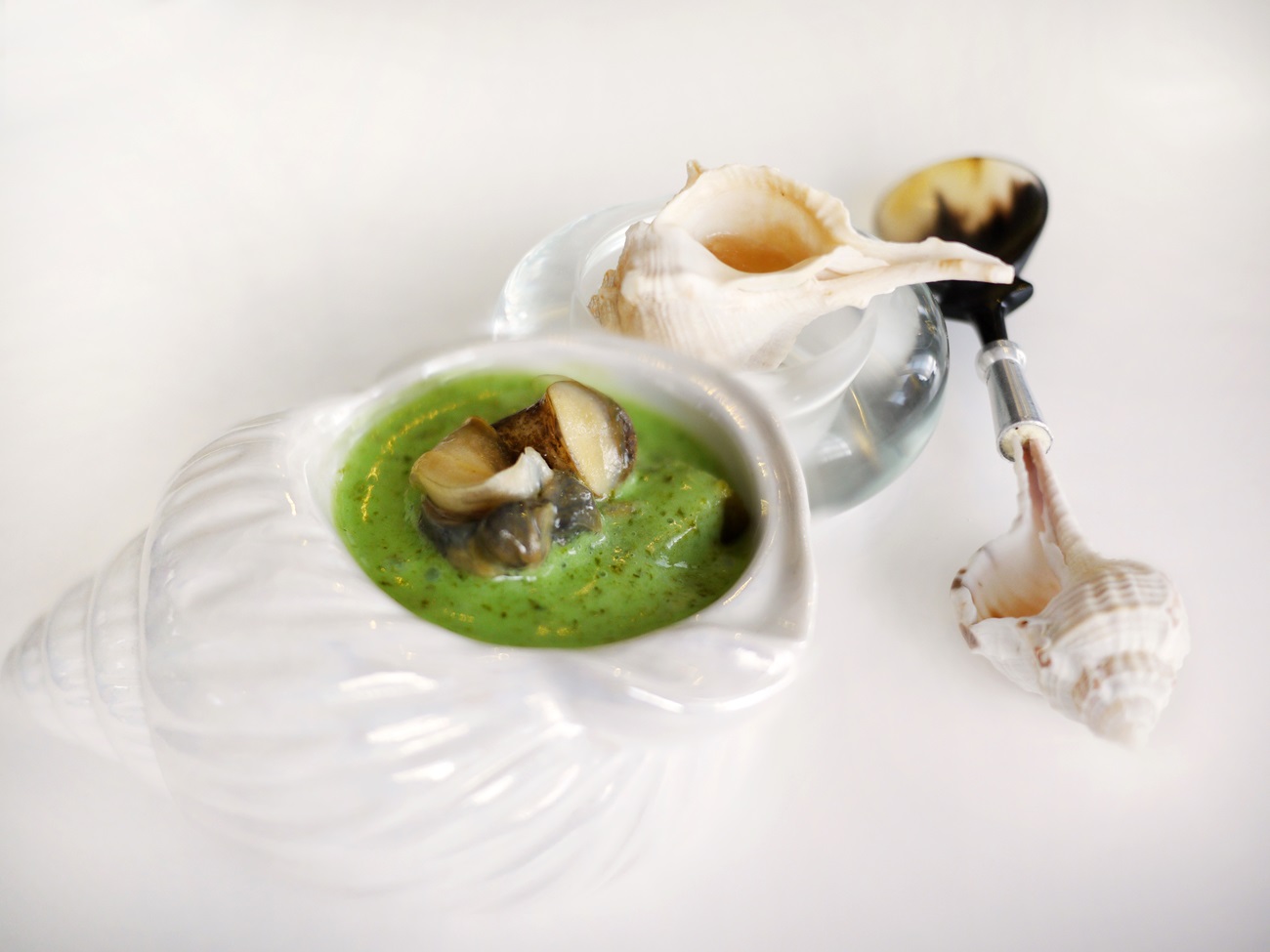
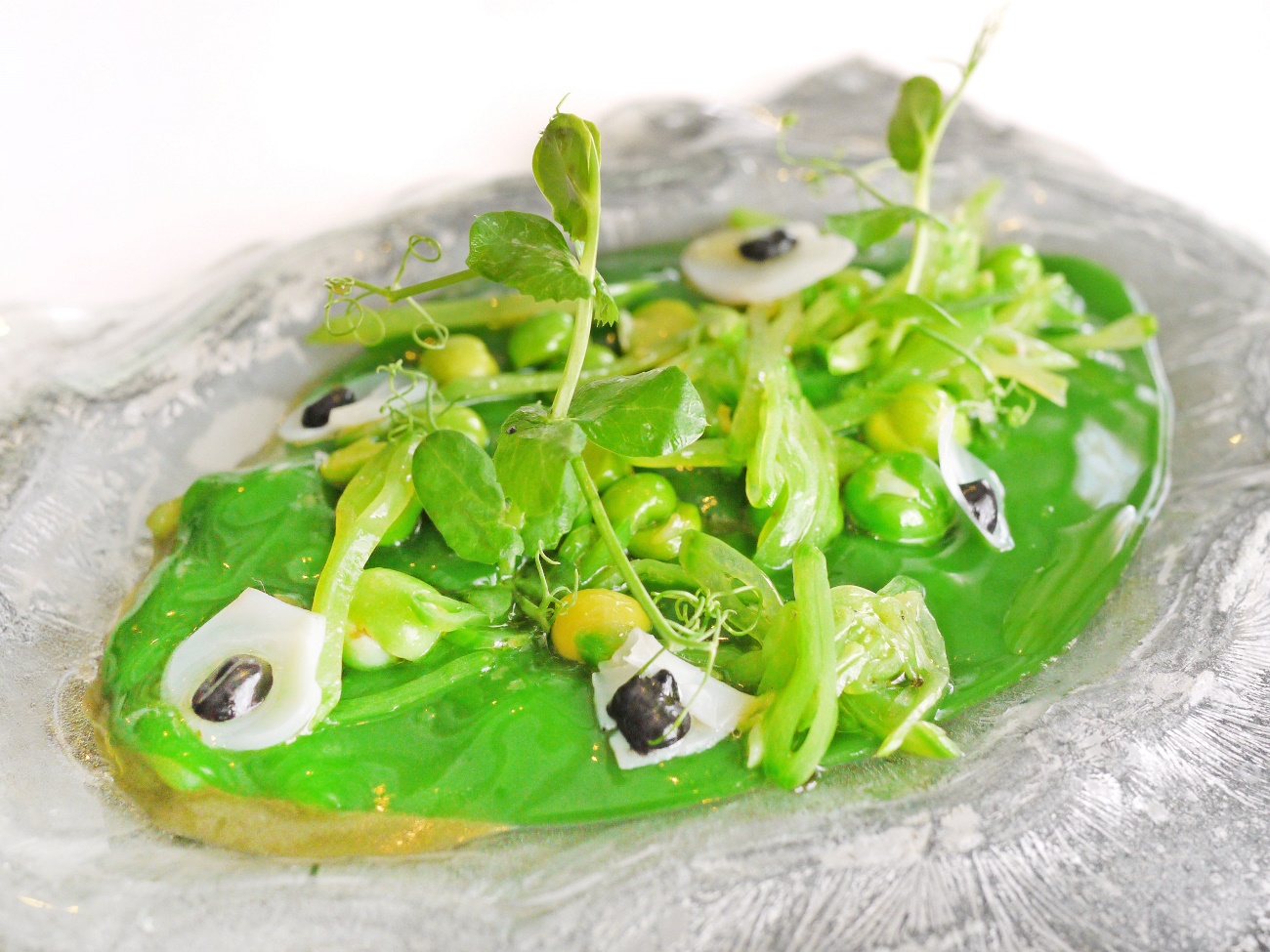
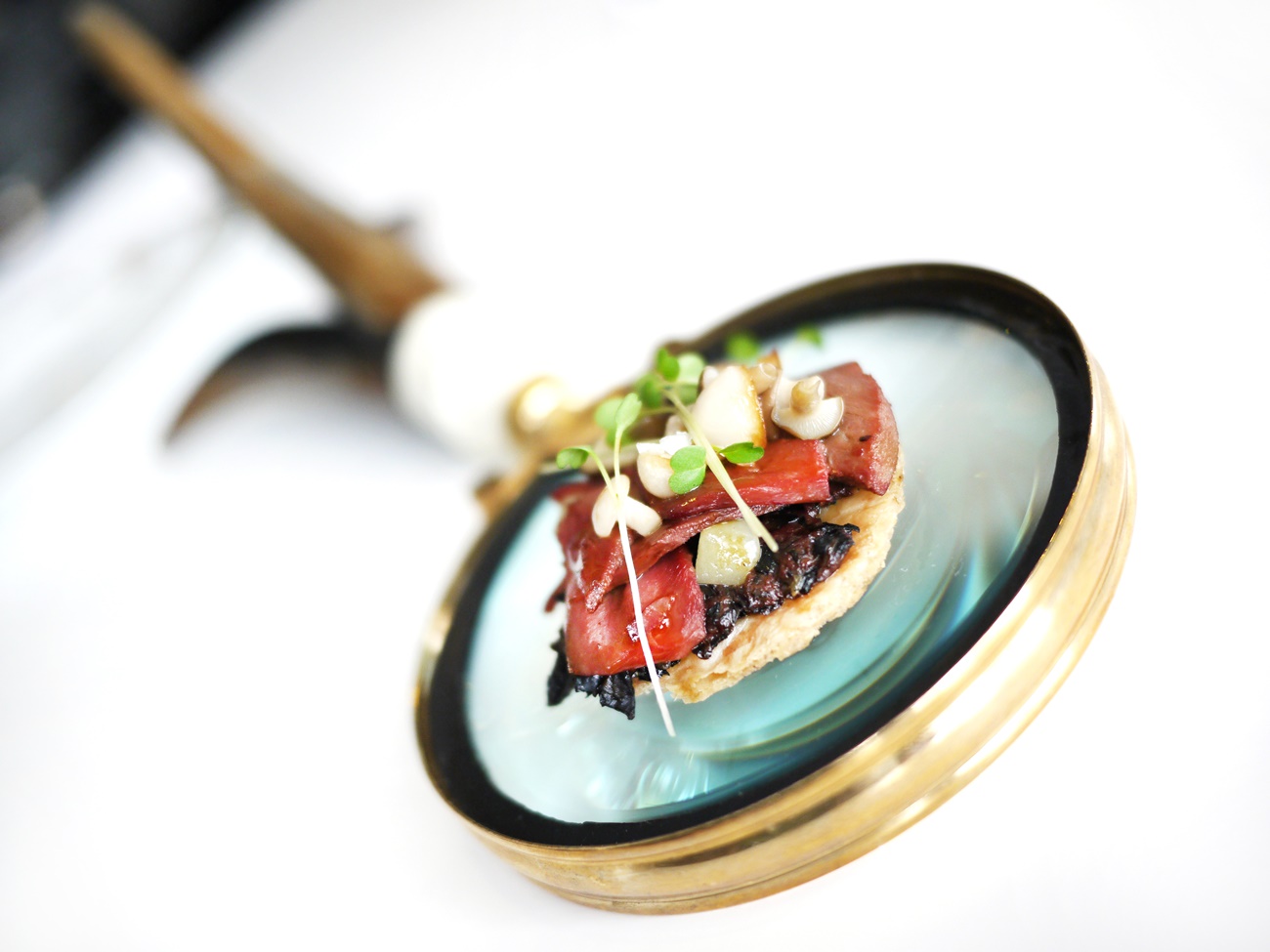
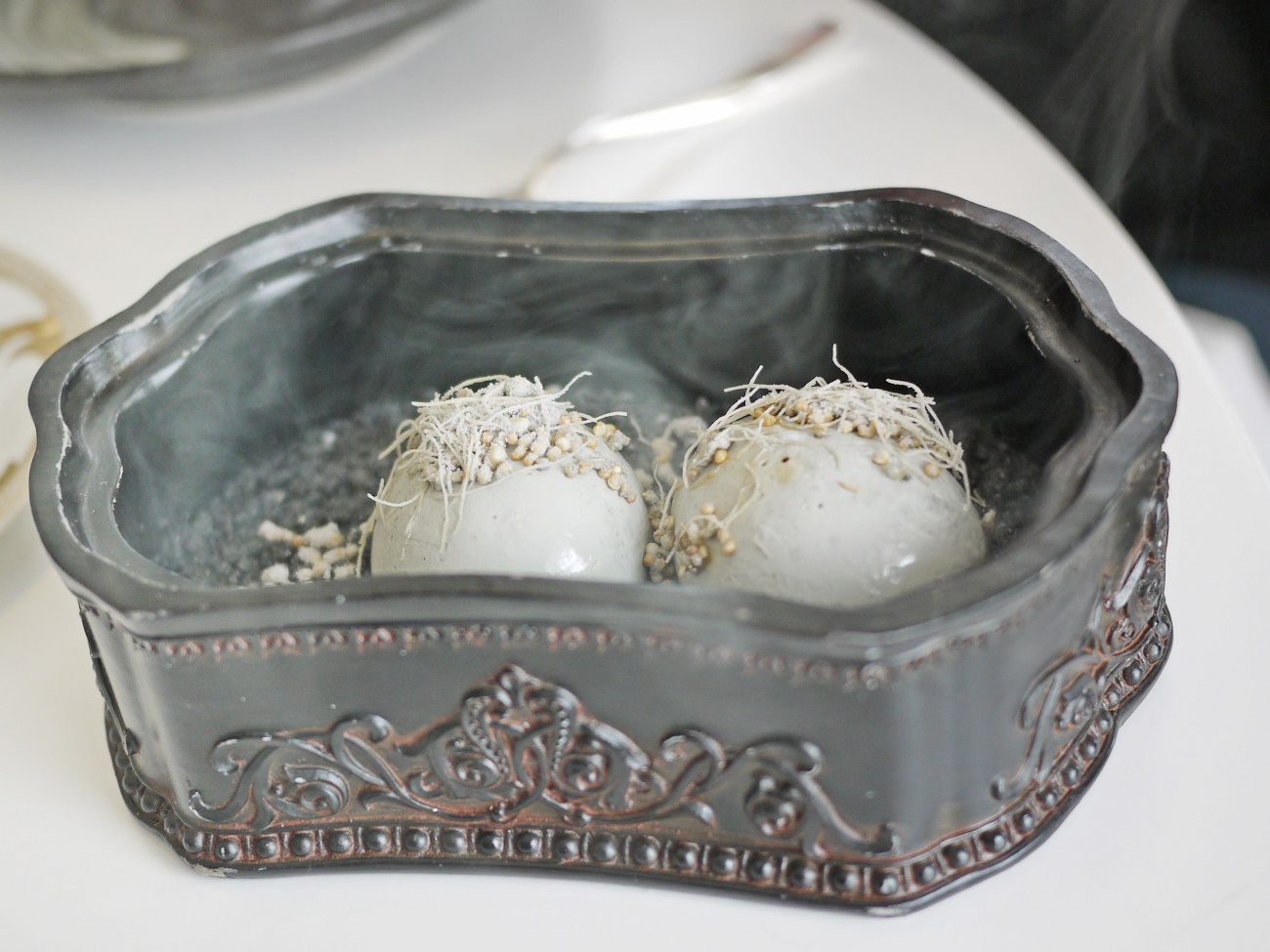
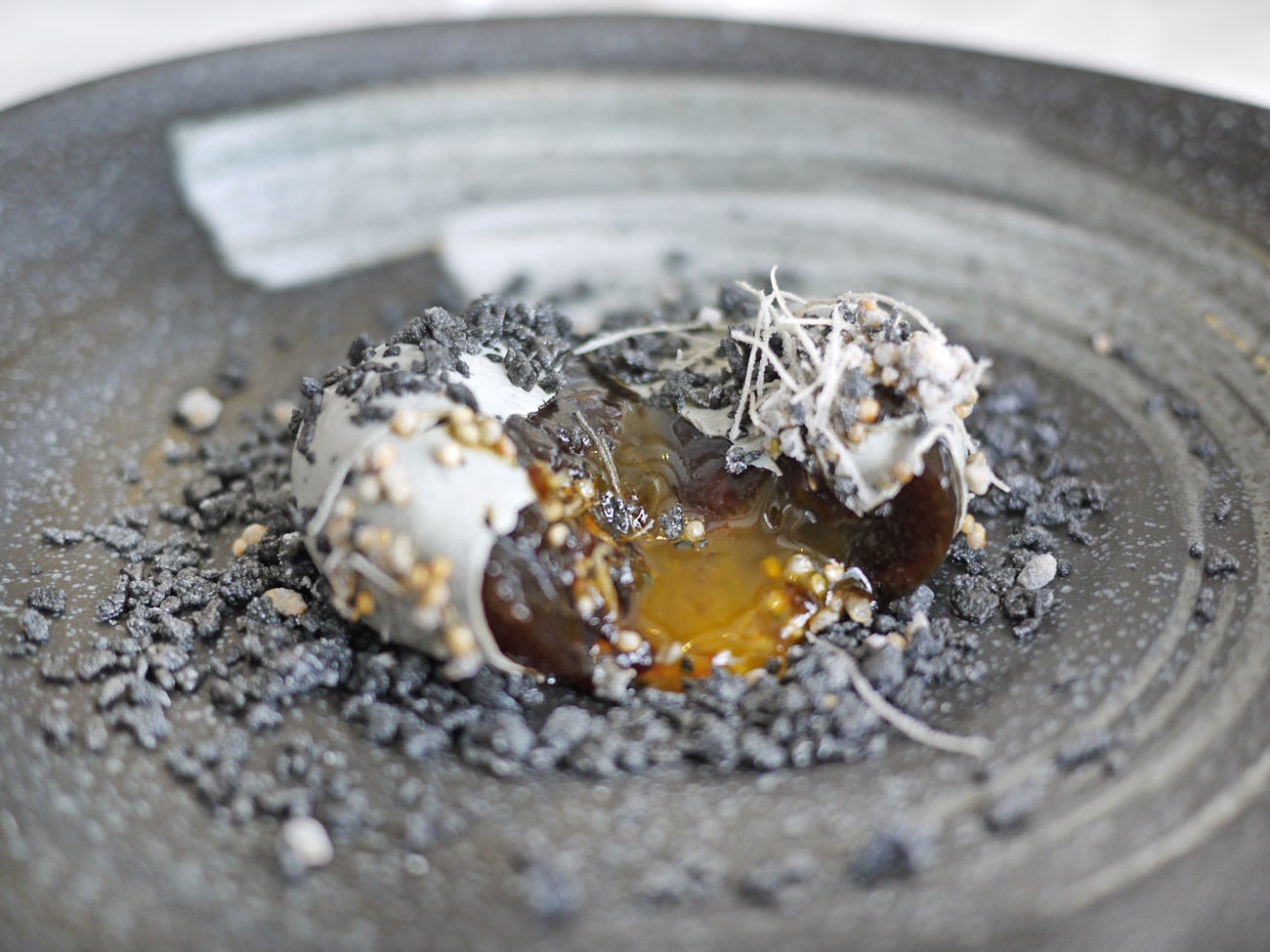
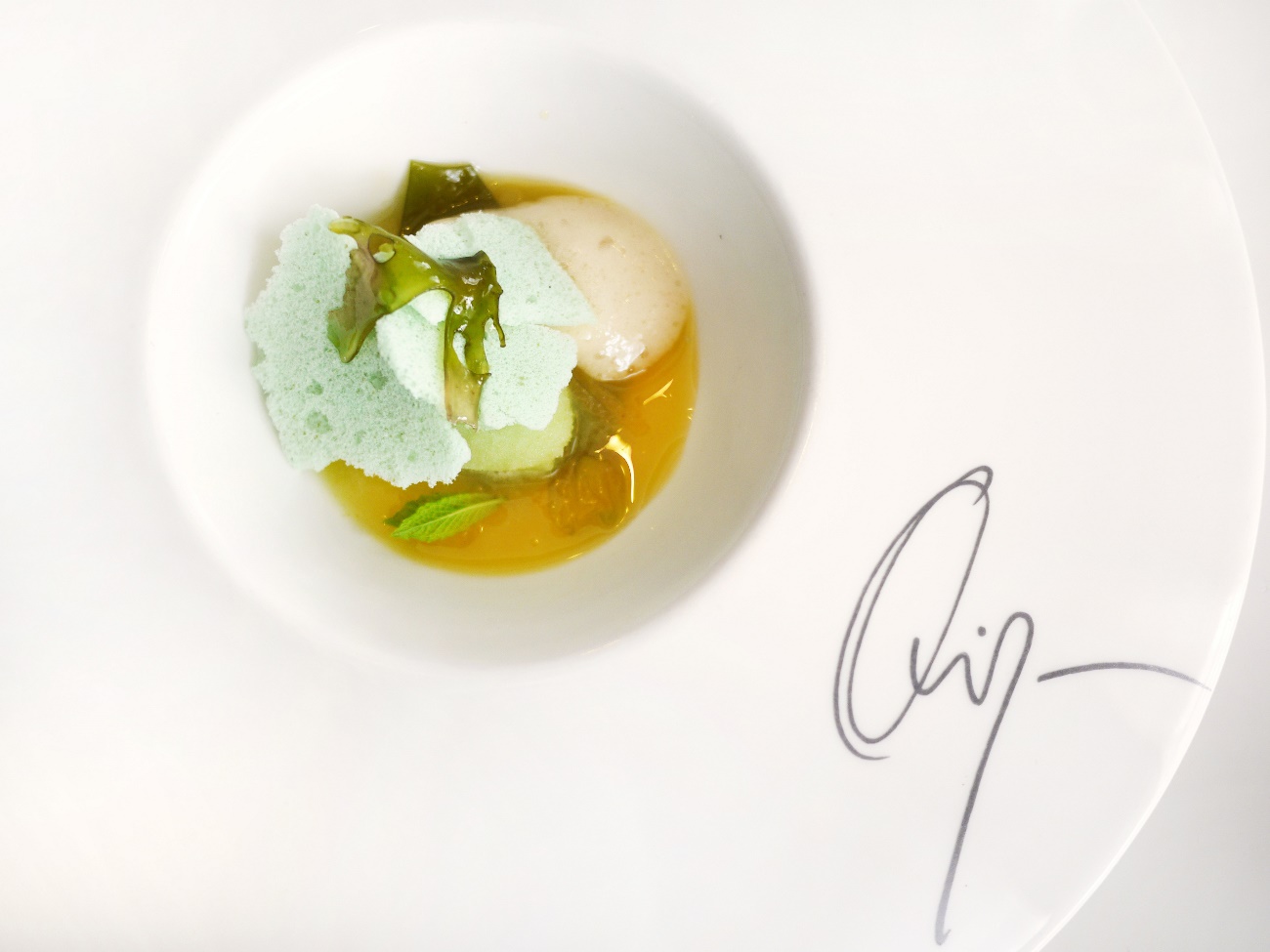
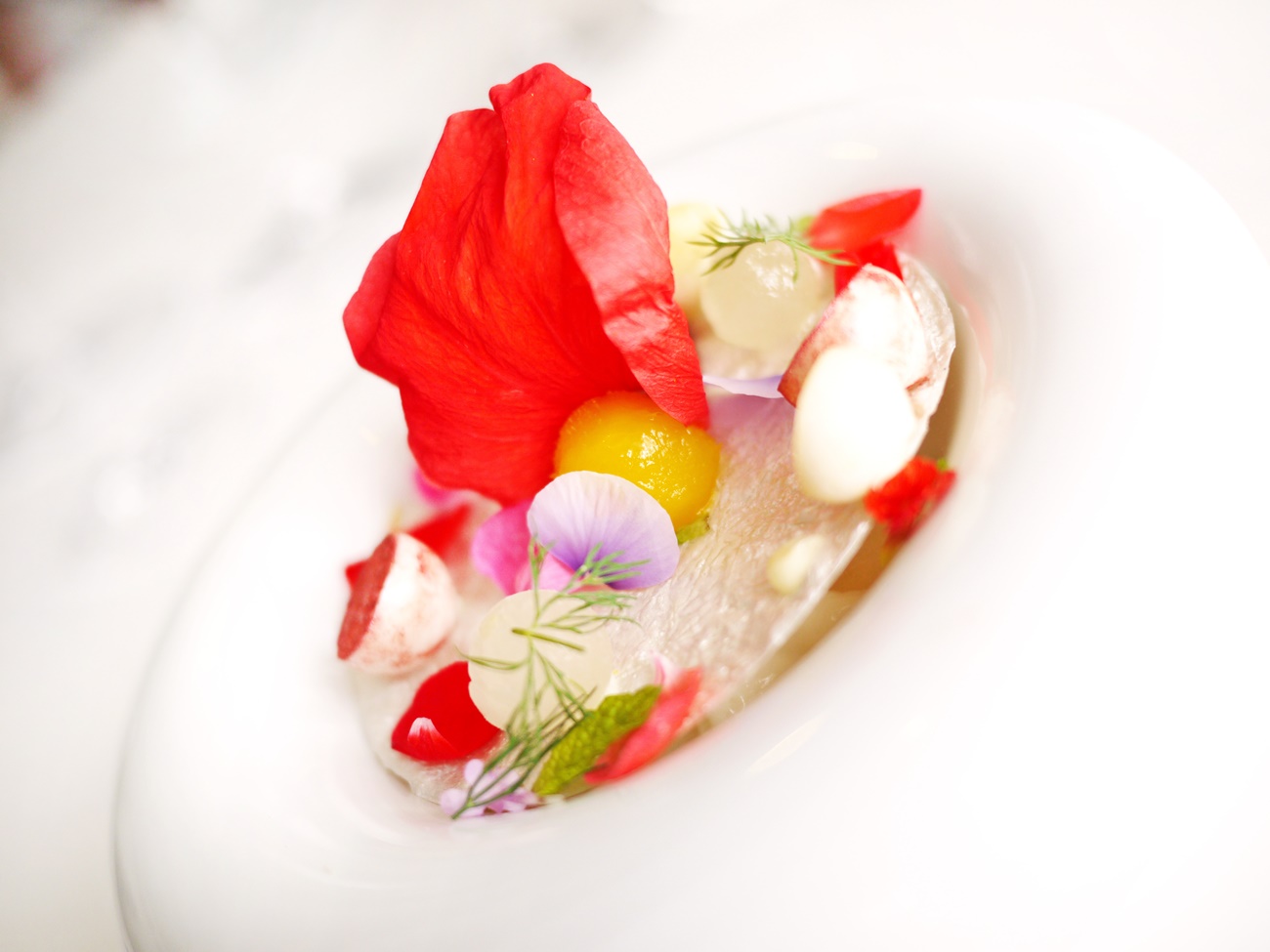
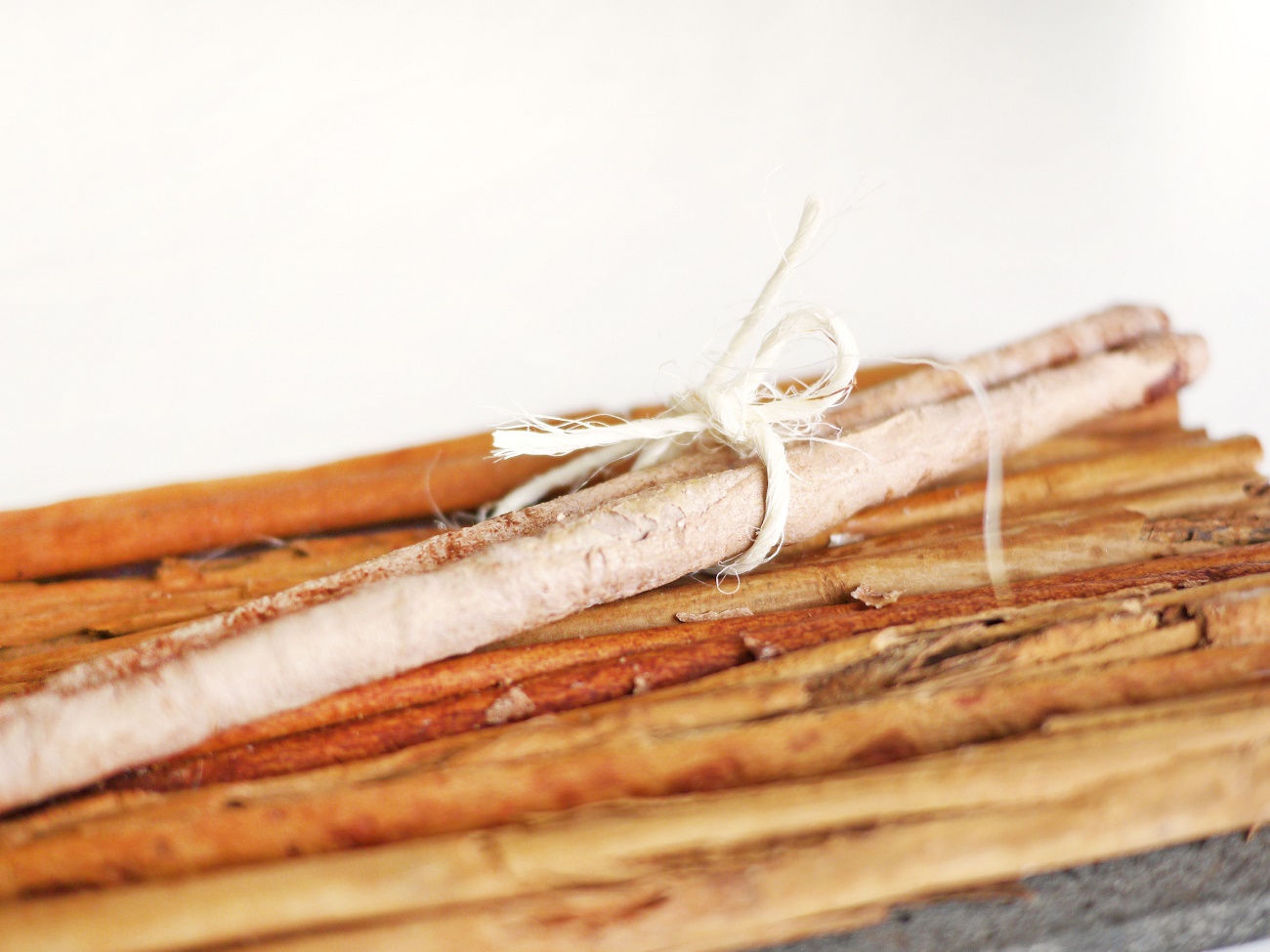
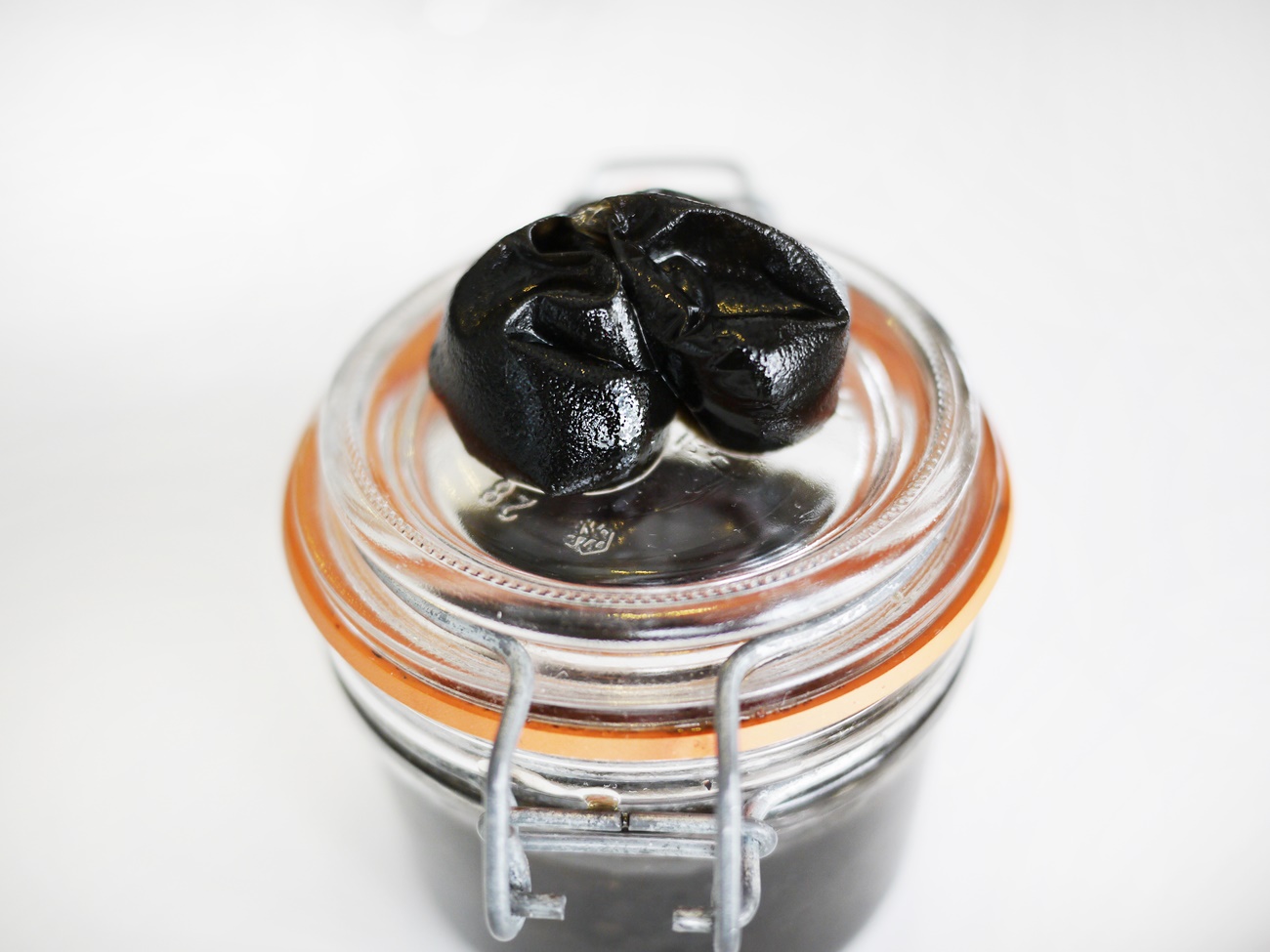
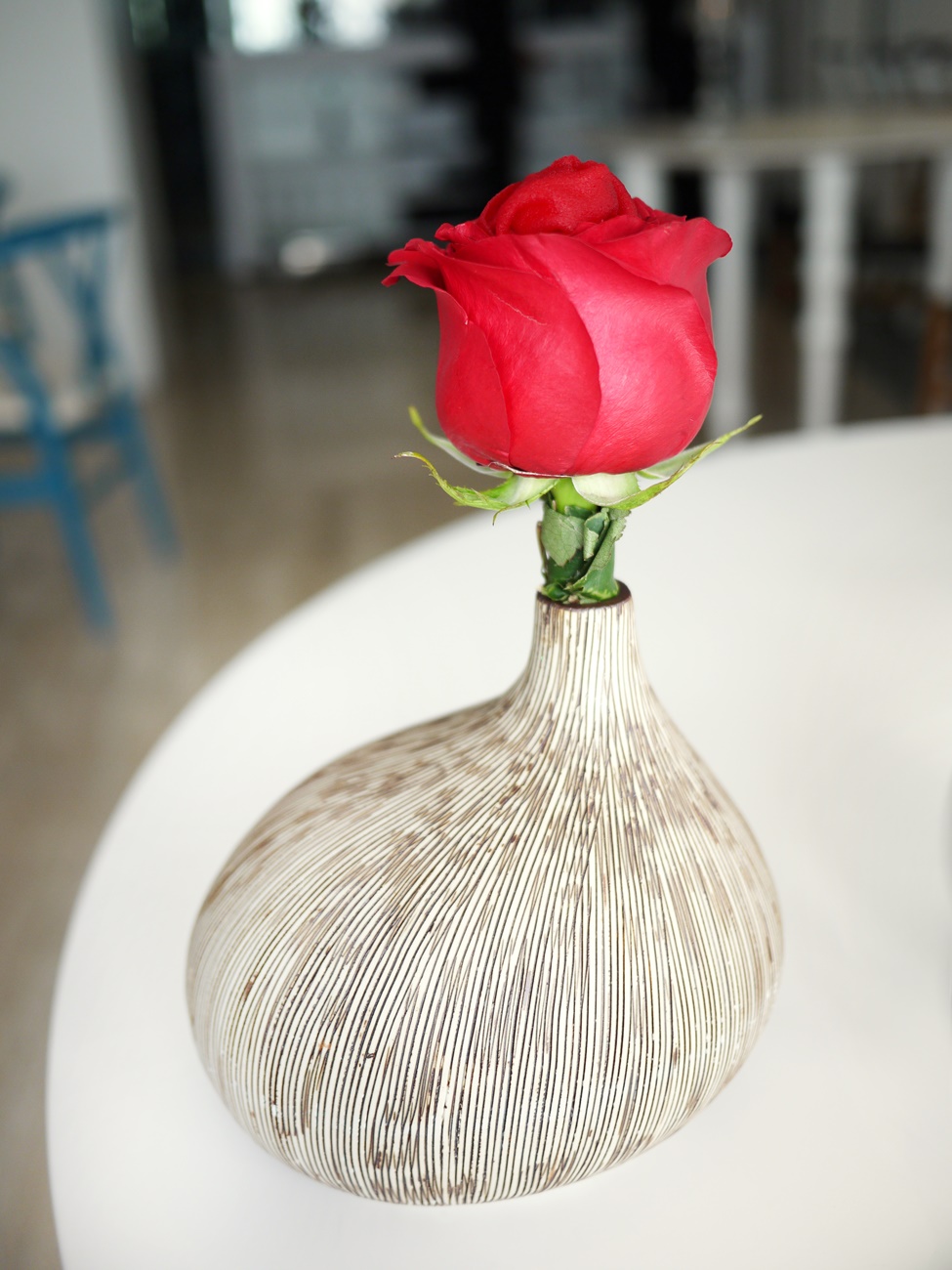
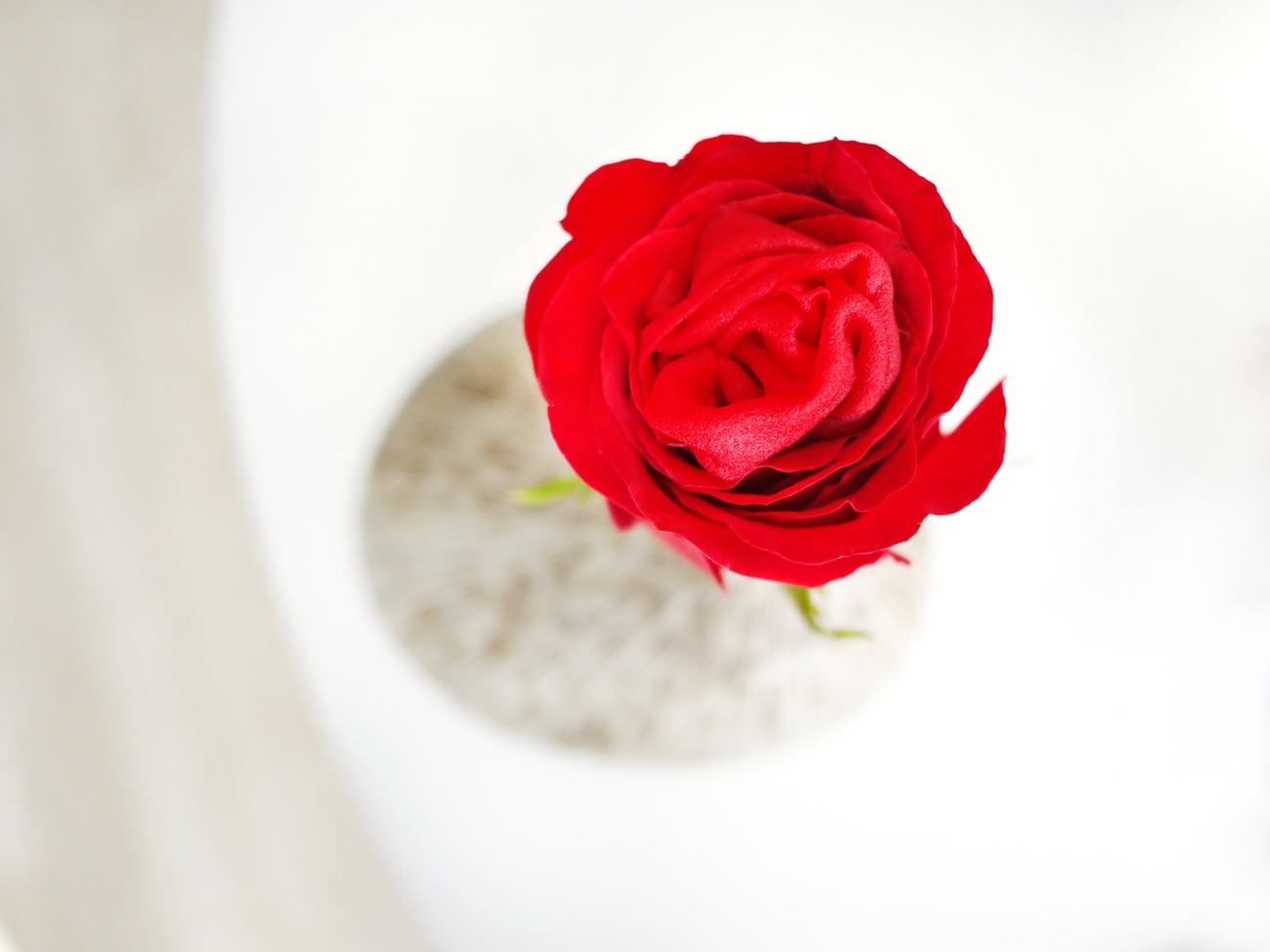
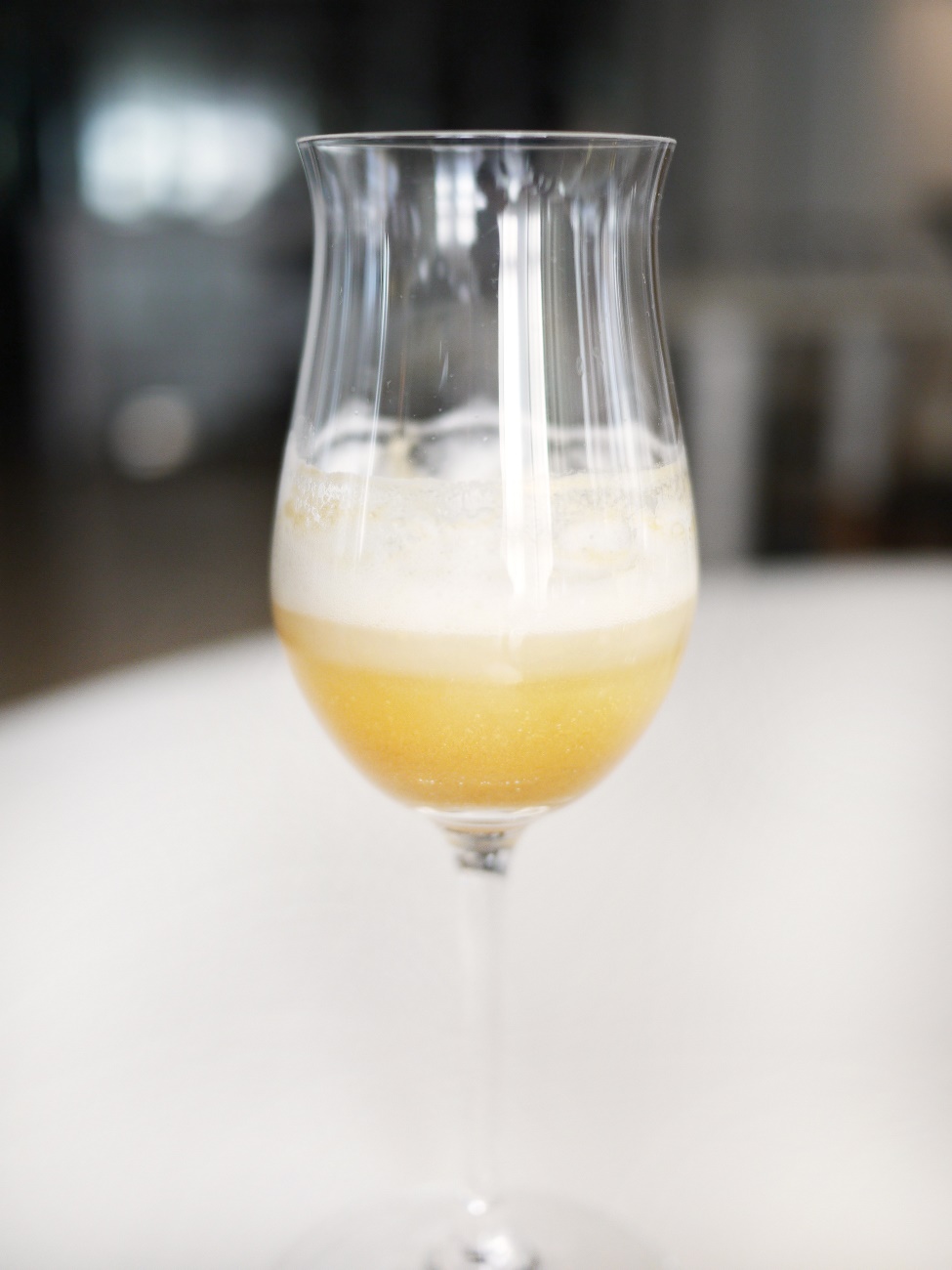
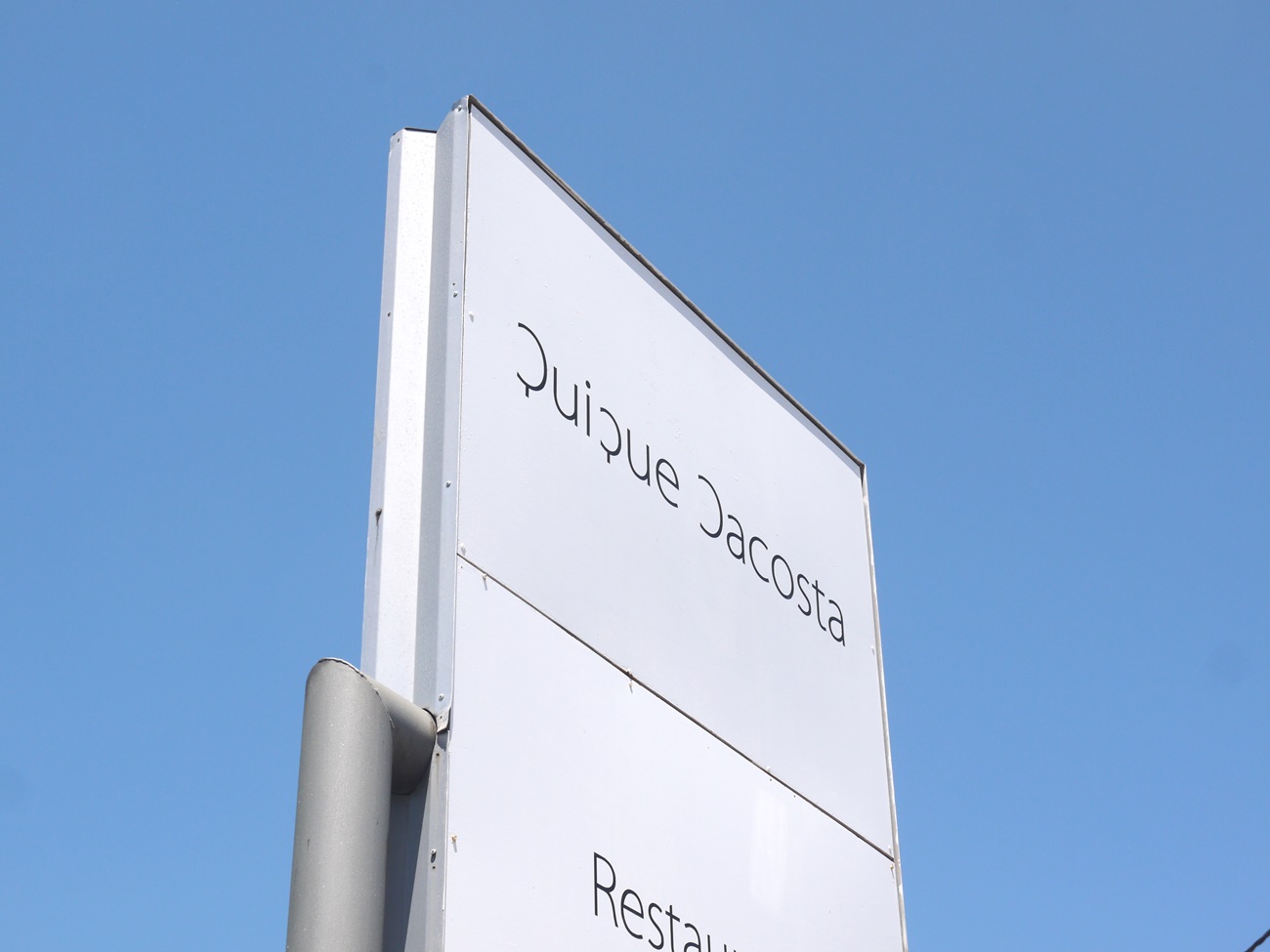
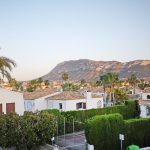

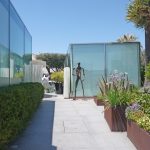
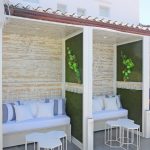
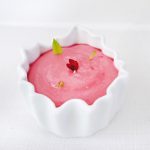
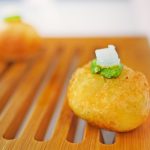
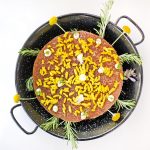
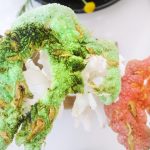
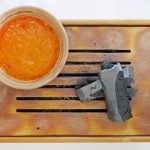
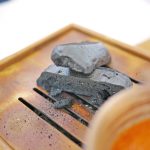
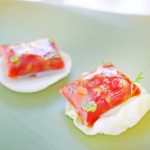
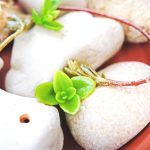
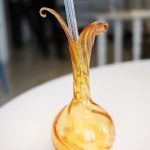
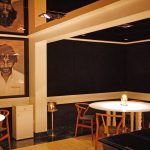
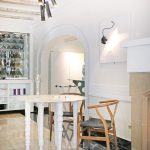
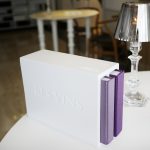
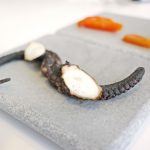
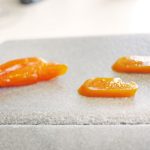
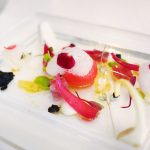
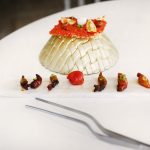
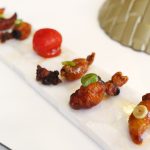
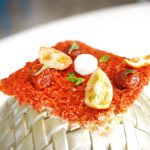
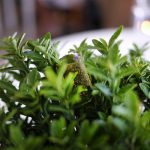
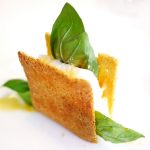
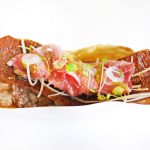
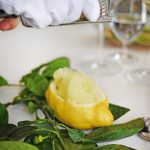
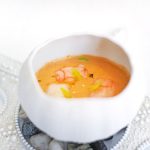
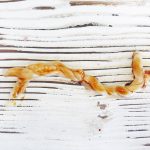
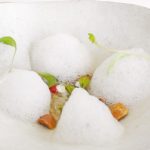
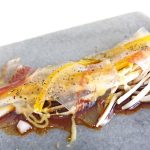
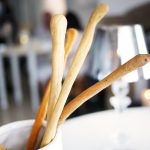
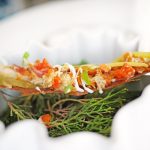
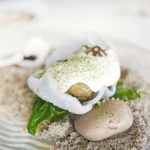
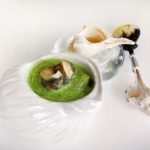
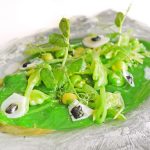
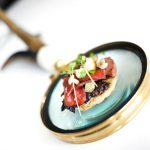
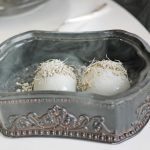
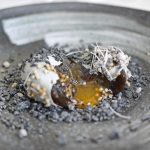
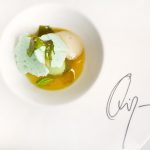
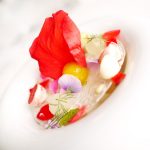
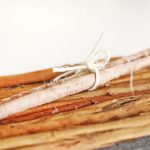
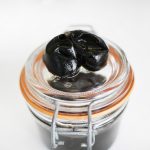
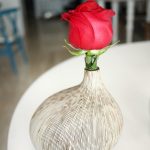
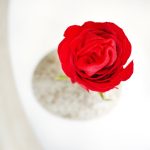
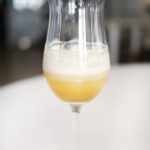

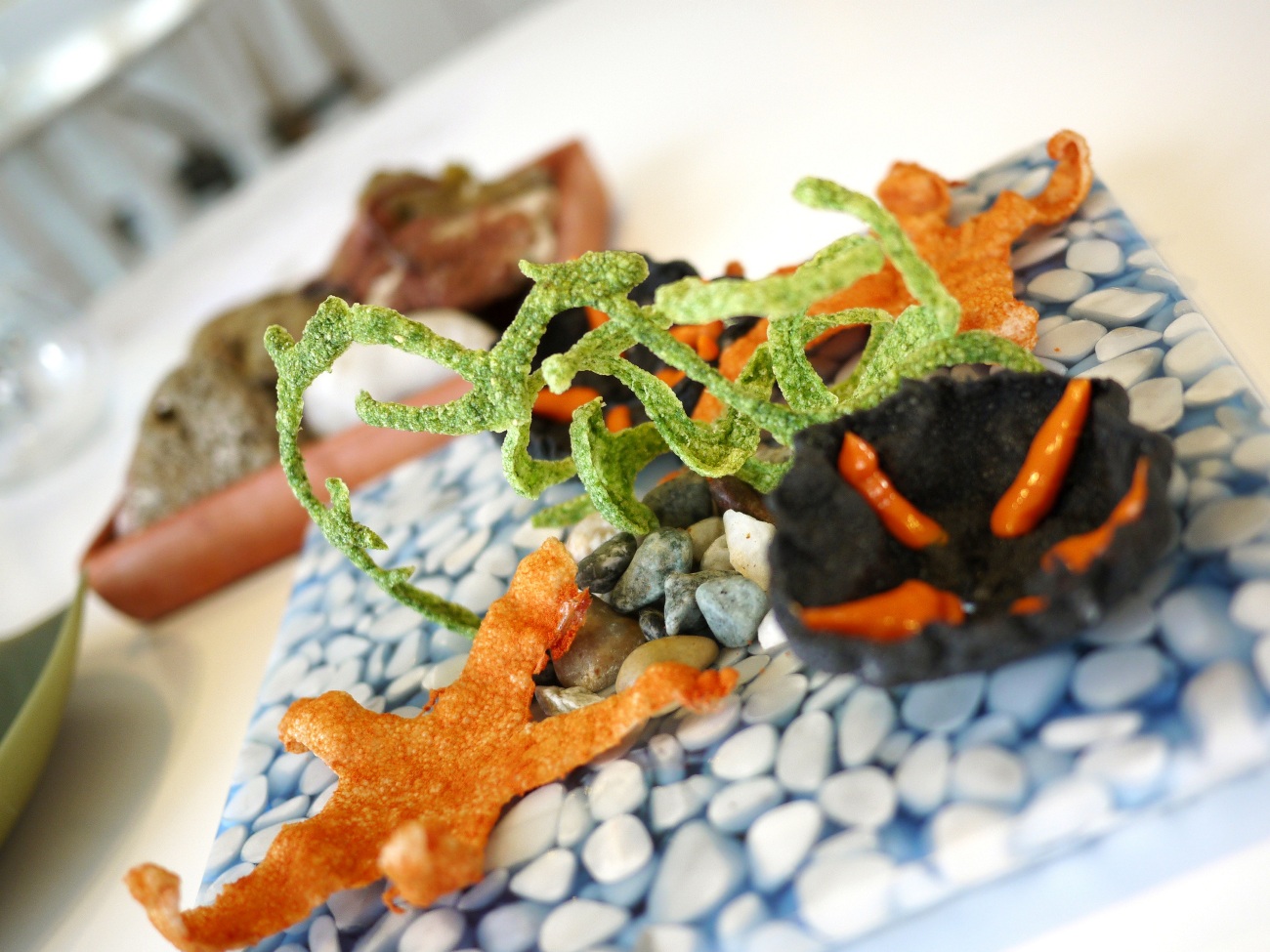
Gaston Nicolas (Spain)
Hola Quique soy un estudiante de cocina de la escuela de hostelería de Santander me gusta mucho tu trabajo y las obras de arte que realizas en el plato , me gustaría poder aprender de un profesional como tu . gracias un saludo